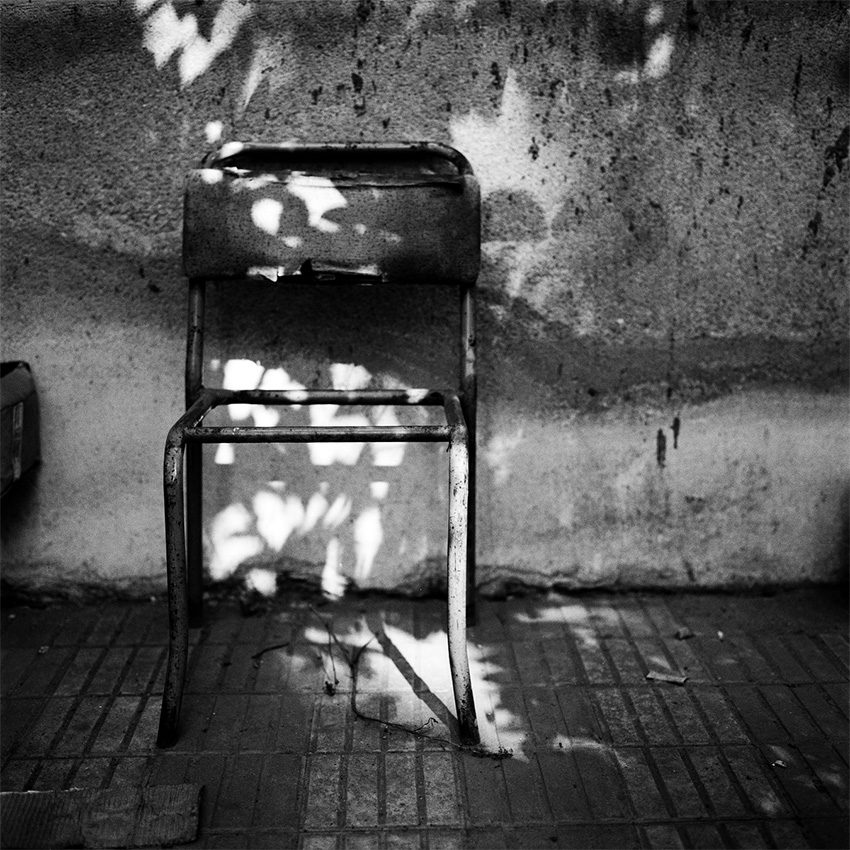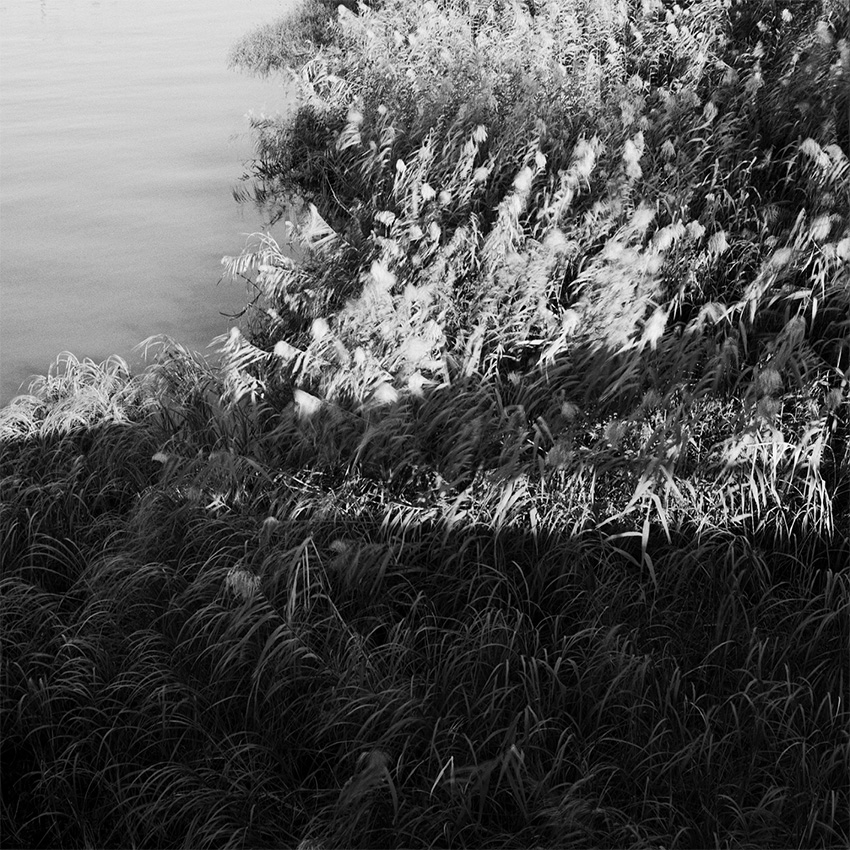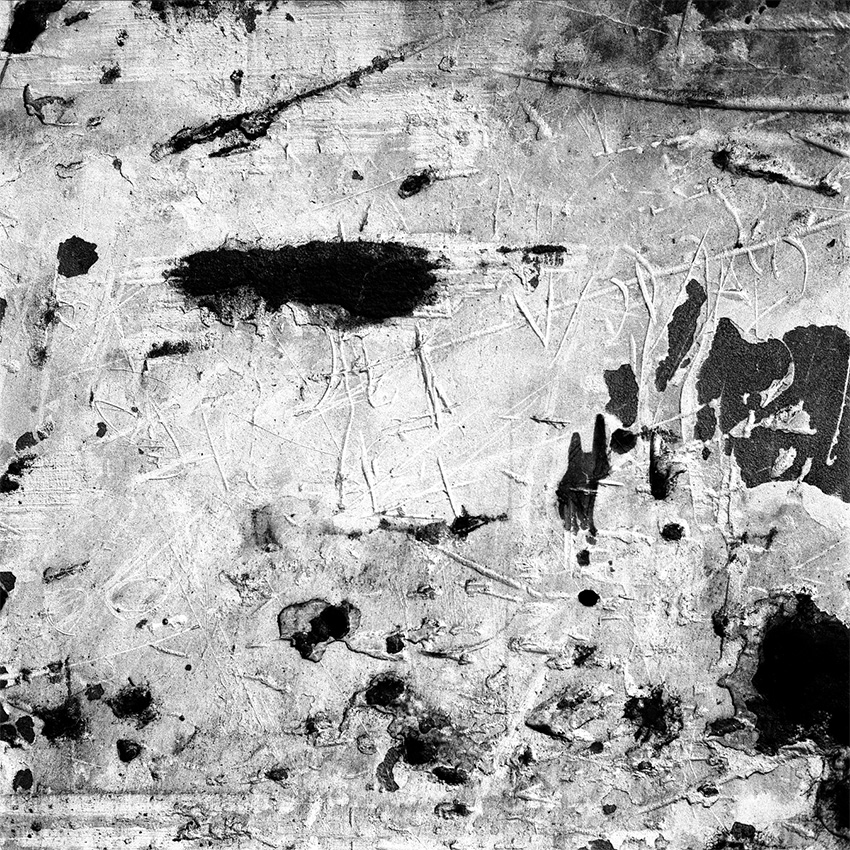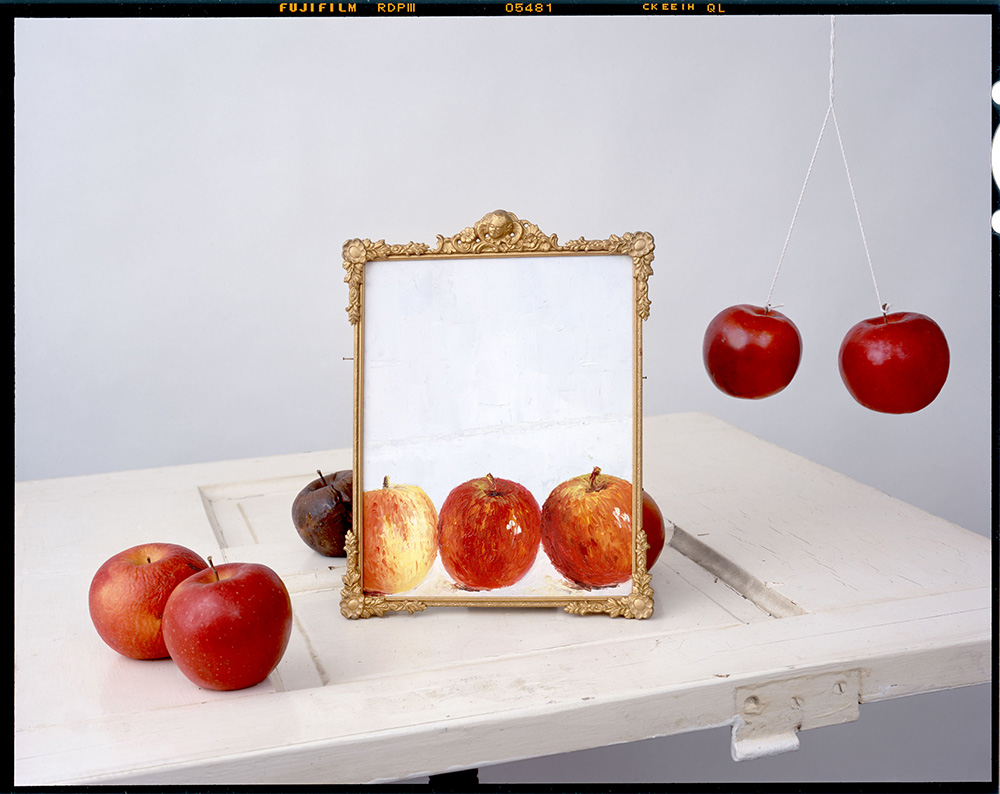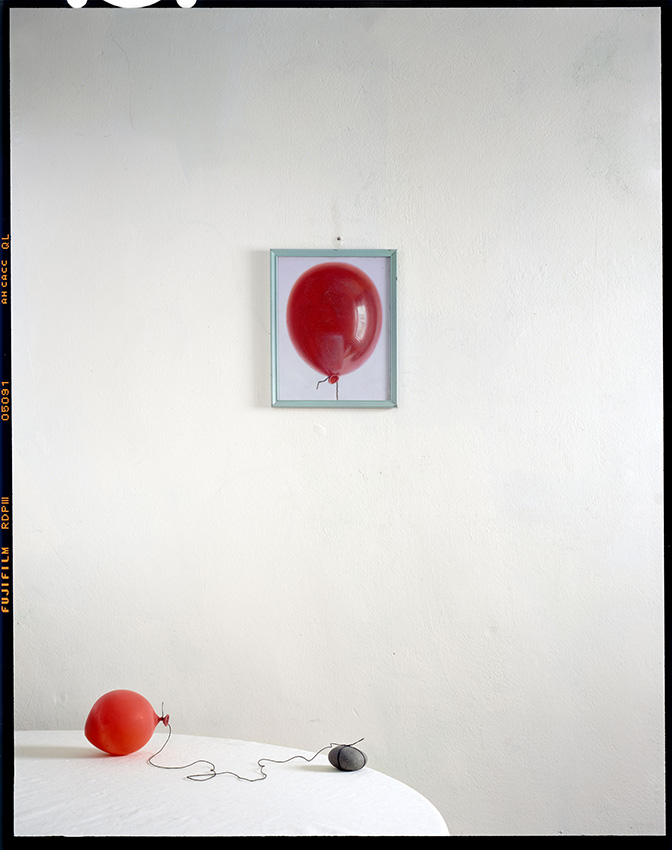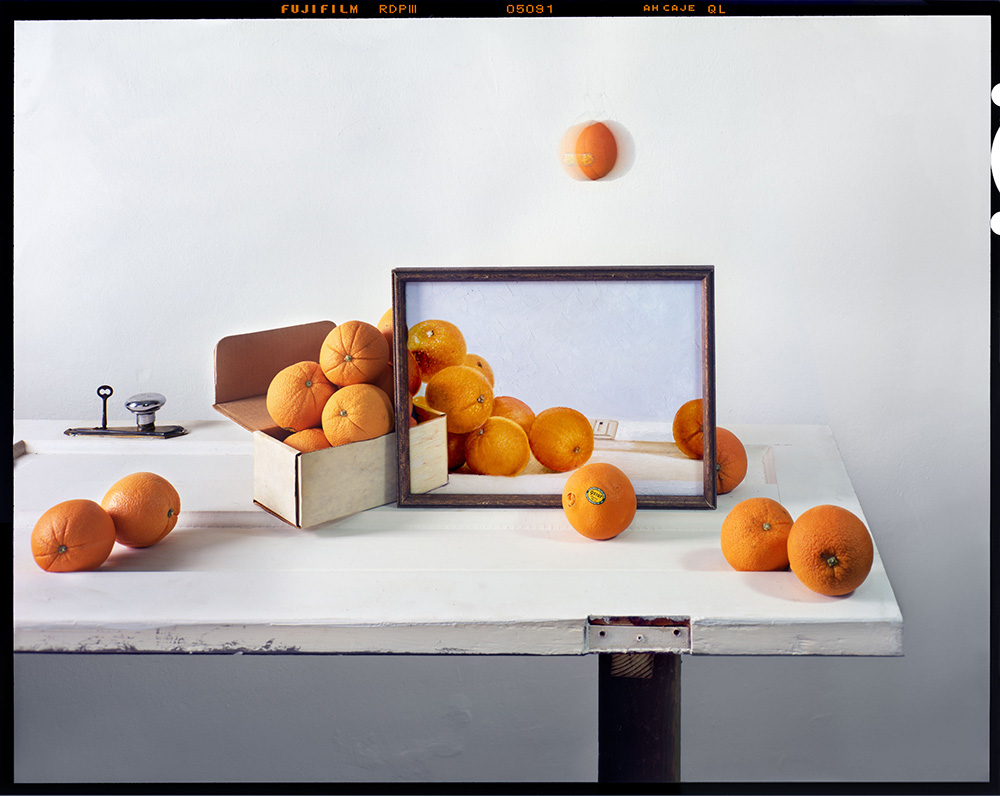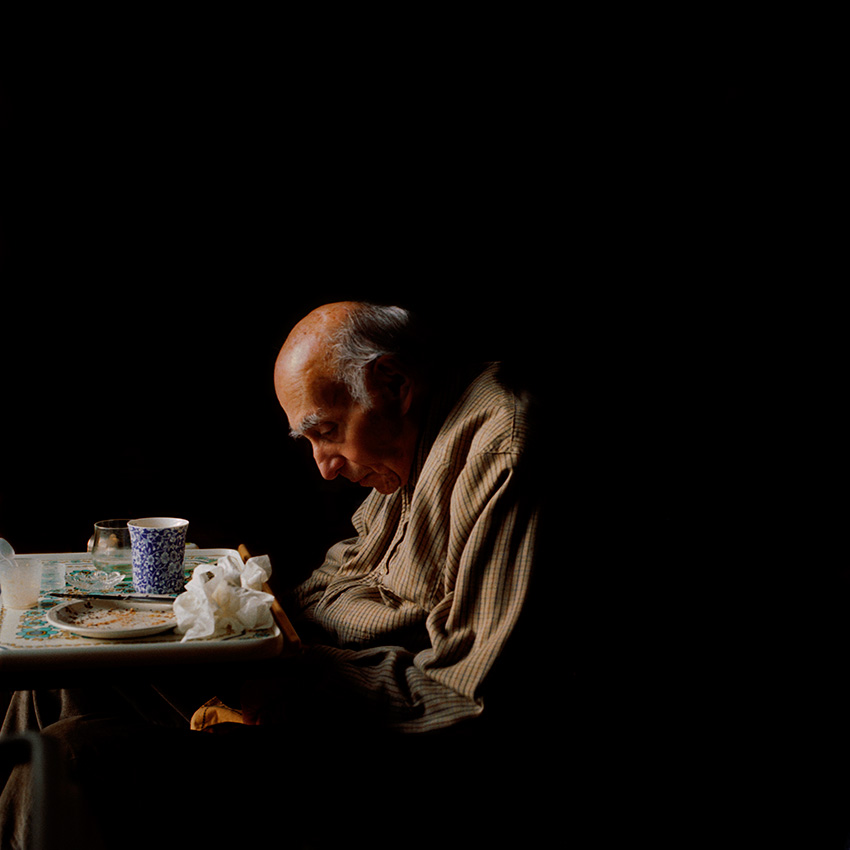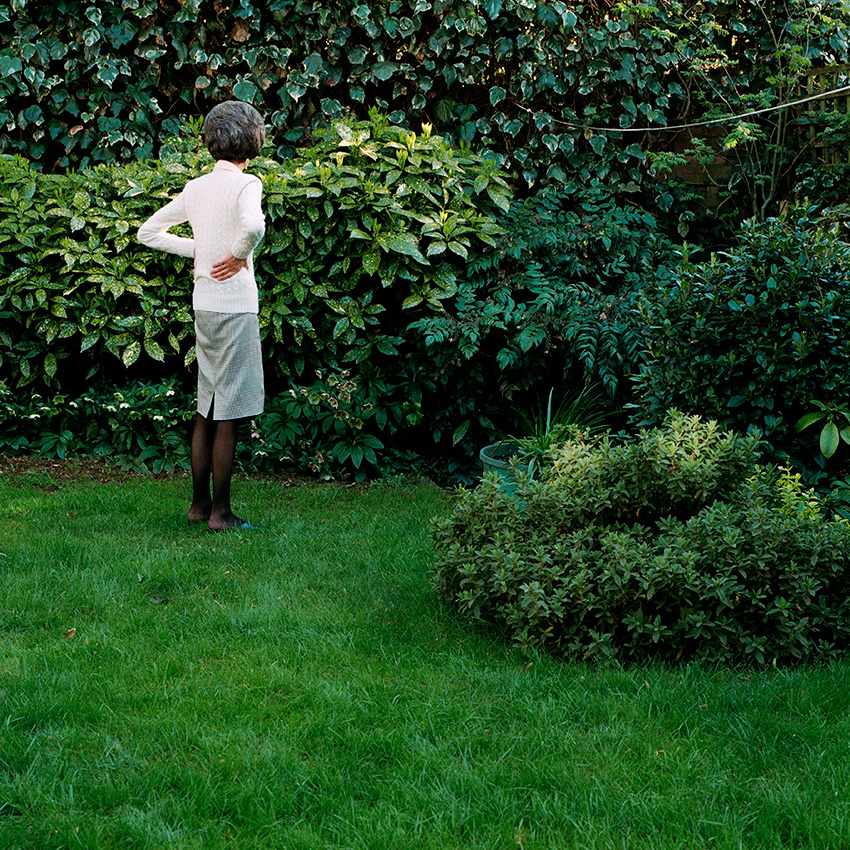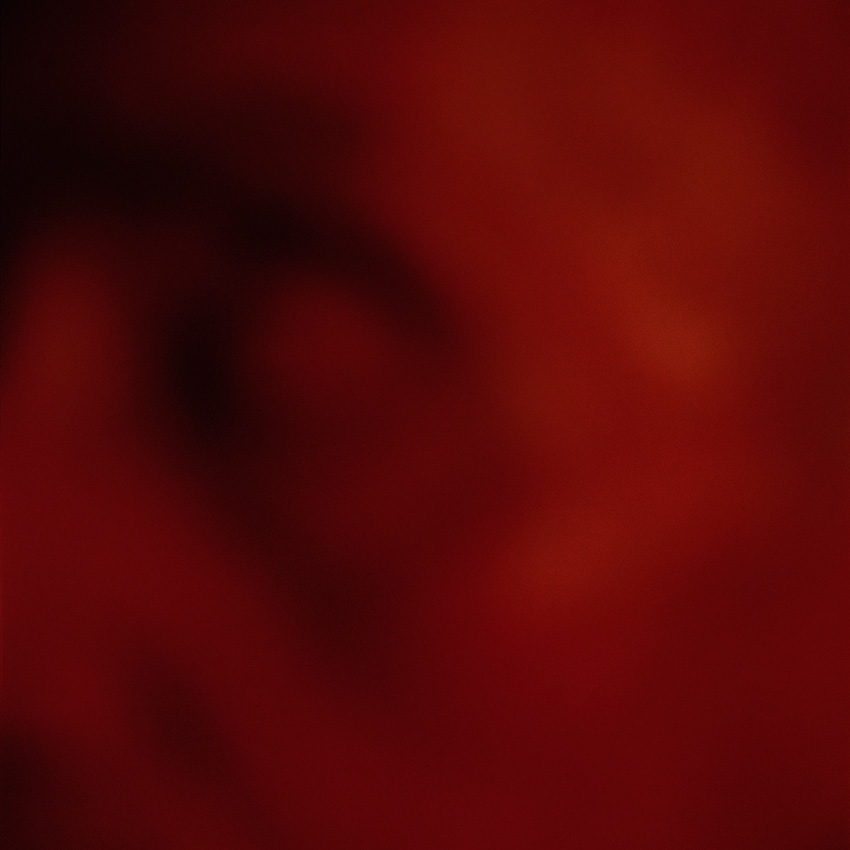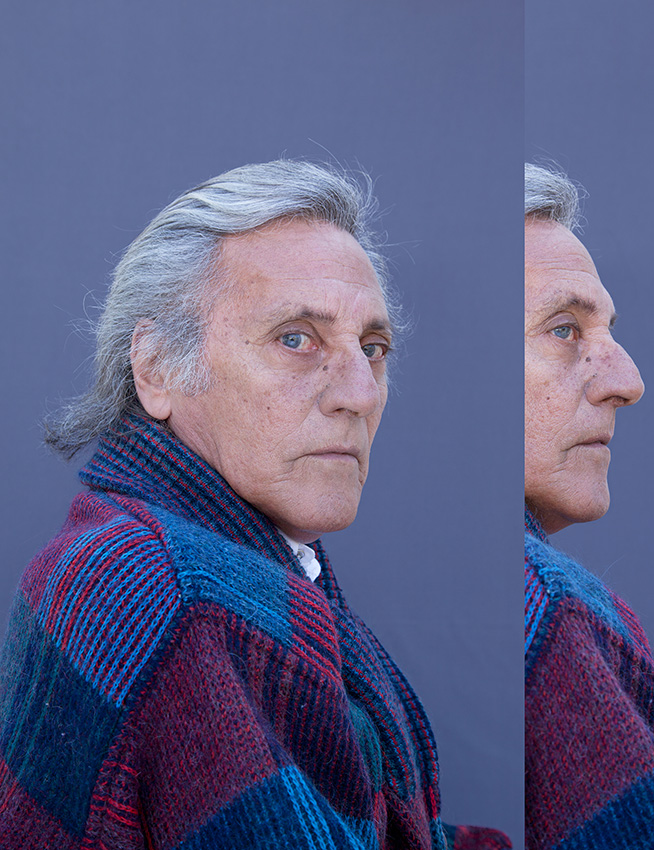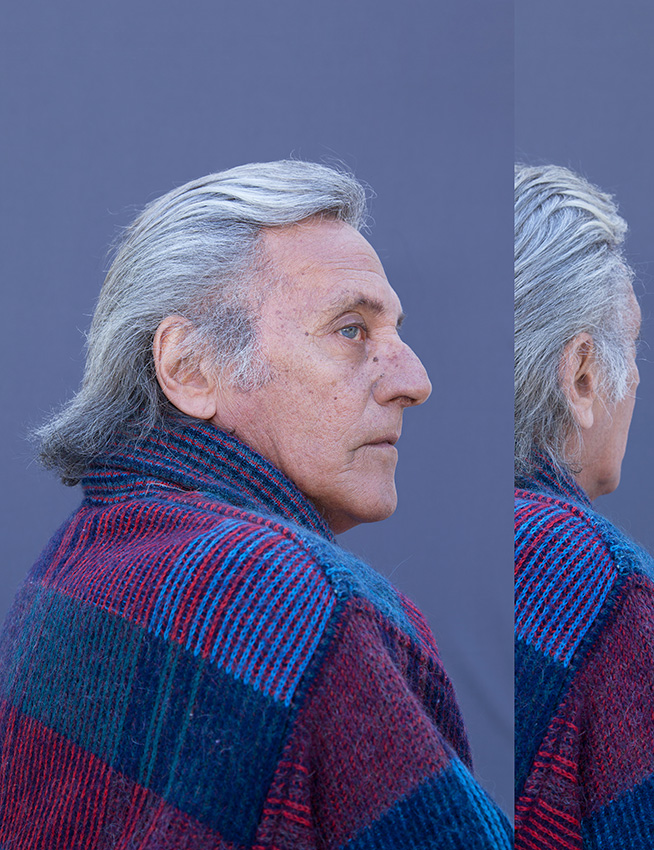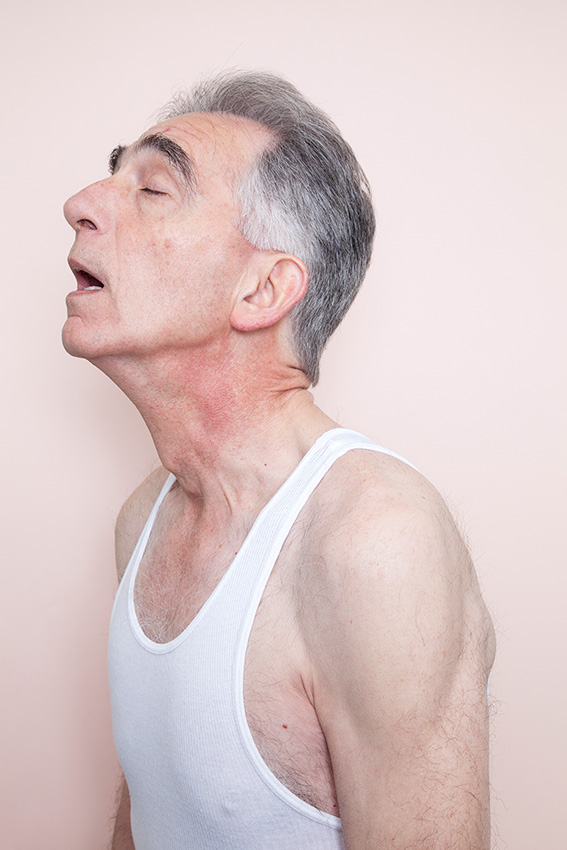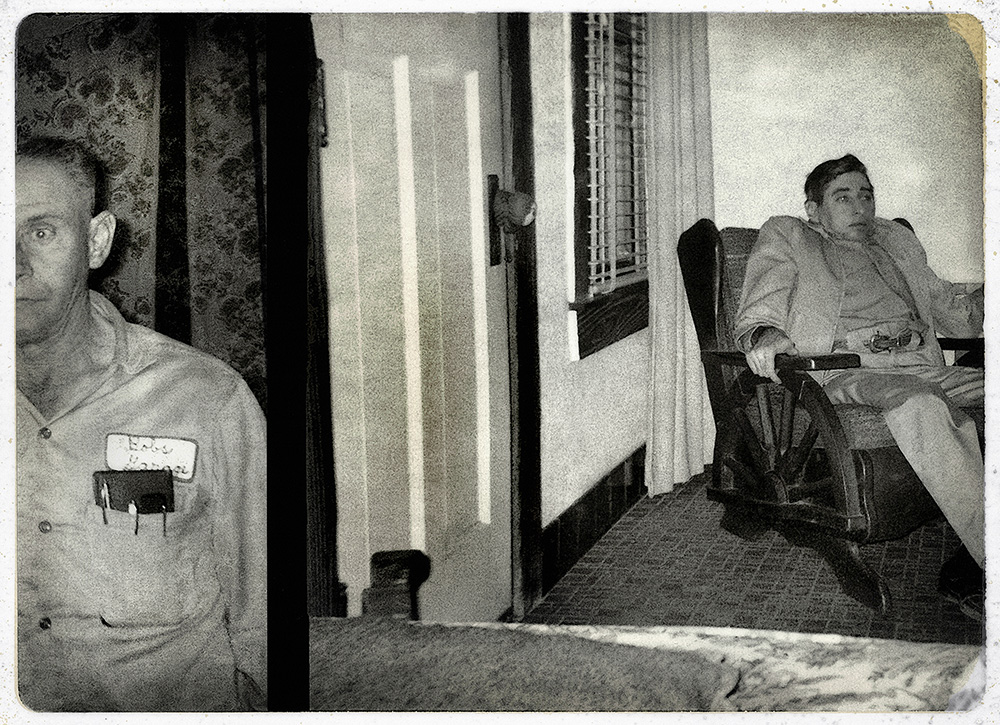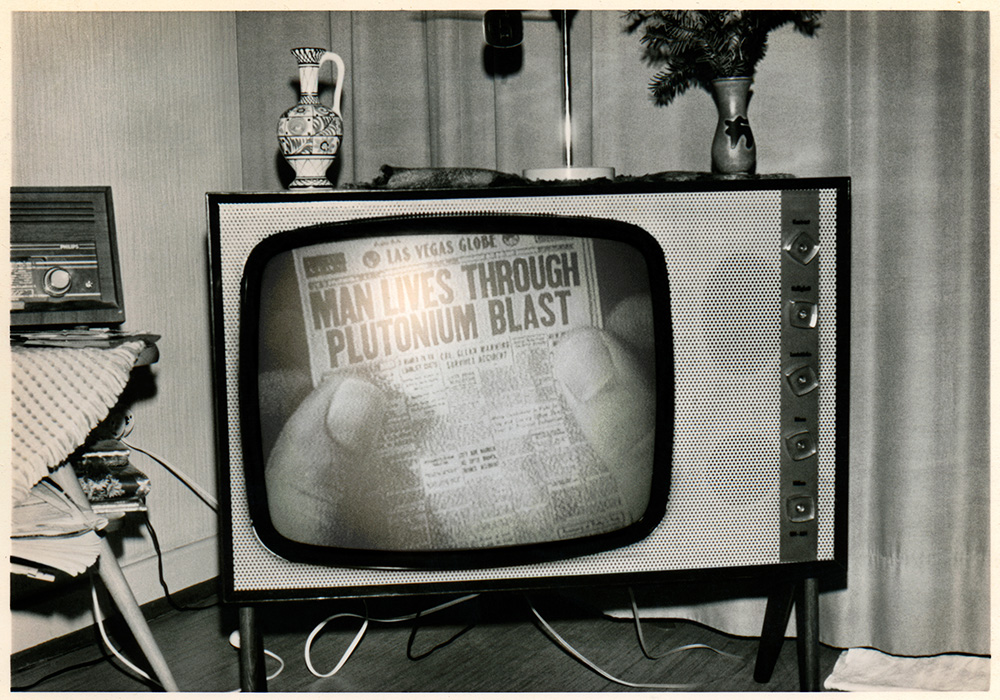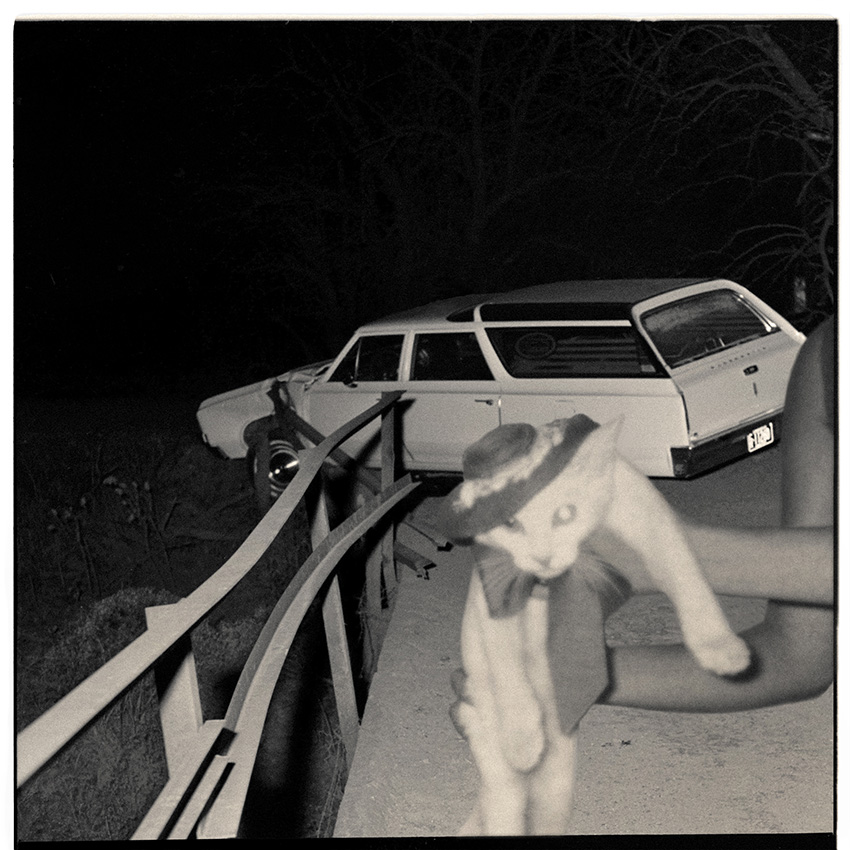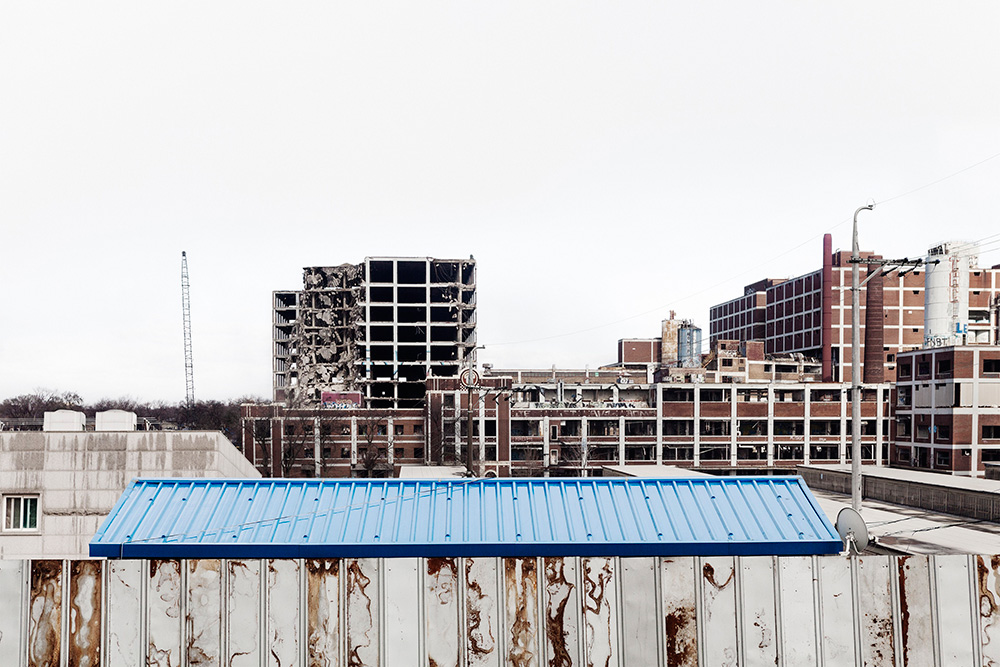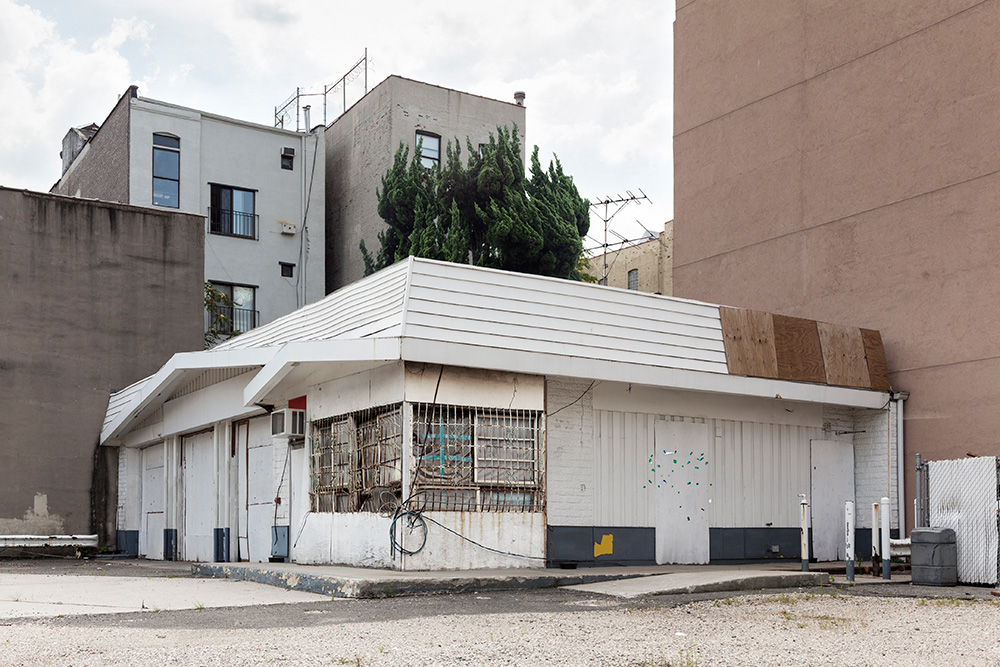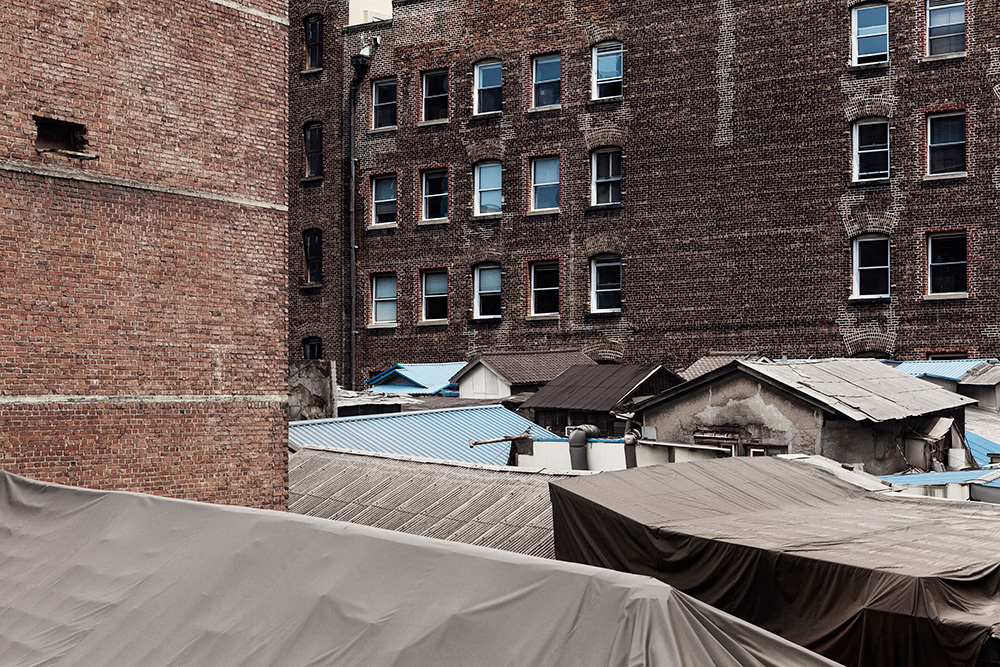Haruki Murakami’s novel, 1Q84, is one about a world with two moons. In a world where only those who have experienced symbolic events can enter, humans coexist with beings of supernatural power. The novel is a fantasy by genre, but it isn’t hard to find in the real world those who look upon their own respective moons. When an object or a place takes on a particular significance, their cognition further shifts one’s perception of the world at large. Is time as objective as it is measurement by the clock as such? Is the departed truly forever lost? What if my heart’s dwelling landscape is somewhere and sometime other than the here and now? These are the questions that gave birth to the title of the exhibition, Two Moons.
두 개의 달
무라카미 하루키의 소설 [1Q84]는 두 개의 달이 뜨는 세상의 이야기다. 상징적인 사건을 경험한 이들만 진입할 수 있는 이 세상에는 초능력을 지닌 생명체와 사람들이 공존한다. 소설은 분명 판타지인데, 자기만의 달을 바라보며 사는 이들은 현실에서도 적지 않다. 뜻밖의 계기로 어떤 대상이나 장소가 각별한 의미를 지니기 시작할 때, 그것을 지각하는 것만으로도 세상은 달라 보이기 시작한다. 시간은 시계가 측정하는 대로만 흘러가지 않고, 떠나 버린 이가 영원히 사라진 것만은 아니며, 내 마음이 사는 풍경은 지금 이곳이 아닐 수도 있지 않을까. 전시 제목 [두 개의 달]은 이런 고민에서 붙여졌다.
이번 전시는 고은사진미술관이 동시대 사진을 좀 더 가까이 소개하기 위해 기획한 ‘고은의 눈’프로젝트의 시작이다. 그동안 한국 작가들을 발굴하는 데 힘써 온 휴스턴 포토페스트와의 교류를 겸해 꾸렸다. 참여 작가들 역시 2014년 포토페스트 포트폴리오 리뷰를 포함하여 다양한 행사에 참여했다.
전시는 크게 두 축에서 꾸려진다. 현실 세계가 온전치 않음을 예민하게 인식한 이들이 포착한 세상과, 카메라를 통해 우리 지각 영역의 바깥을 경험해 보고자 하는 시각 실험을 곁들인 작업이다. 물론 두 갈래가 완전히 분리될 수는 없다. 이들은 결국 우리가 세상을 인식하고 해석하고 그 세상 안에 놓이는 방식과 맞물리기 때문이다. 전시의 한 축은 죽음에 관한 것이기도 한데, 공교롭게도 시아버지를 포함해 모두 아버지의 죽음과 관련이 있다. 죽음은 삶의 바깥이라는 점에서 가장 익숙하고 흔하게 경험하는 또 다른 세상이다. 문제는 이 사건이 삶과 죽음, 기억과 망각처럼 대립항으로만 존재하지 않는다는 점이다.
다이애나 마타의 시아버지 자발라는 생사를 확인할 길이 없다. 그는 살았을 수도 있고 숨을 거뒀을 수도 있는 실종 상태다.
카타피 독재 정권에 저항했던 자발라는 20여 년 전 비밀 경찰에 납치되었다. 그 뒤 그가 수용소에서 보내온 마지막 편지를 끝으로 생사도 소재지도 확인할 길이 없었다. [증거]는 리비아에서 민주화 운동으로 실종되었거나 희생당한 이들의 흔적을 쫓아간 6년 동안의 프로젝트다. 일기에서 발췌한 짧은 글을 곁들인 이 작품은 일상에서 접하는 리비아 소식과 시아버지를 향한 가족들의 그리움으로 시작해, 카다피 정권이 무너진 뒤 마침내 방문한 리비아에서 시아버지의 흔적을 찾아가는 여정으로 진행된다. 마타는 리비아 곳곳에서 시아버지의 처형을 암시하는 상황들을 목격하지만, 그의 죽음을 확신하지 못한다. 그의 죽음을 확인할 그 어떤 증거도 발견할 수 없기 때문이다. 흔히 사진이 존재한 것들의 흔적이라면, 다이애나 마타의 작업은 역설적으로 부재의 흔적을 묻는다. 존재의 흔적이 이제는 사라져 버렸다는 것을 의미한다면, 부재의 흔적은 그가 어딘가에 존재했음을 확인할 수 있는 유일한 단서이기도 하다. 자발라는 부재의 흔적조차 없이 존재와 부재의 공백 사이로 사라져 버린 것이다.
마리엘라 산카리는 다른 이유로 아버지의 죽음을 목격하지 못했다. 우리가 흔히 모세로 알고 있는 작가의 아버지 ‘모이세스’는 마리엘라가 열 살 때 스스로 생을 마쳤다. 쌍둥이인 그녀 자매는 아버지의 사체와 마지막 인사를 할 수 없었는데, 어른들이 장례식에 참석하는 것을 허락하지 않았기 때문이다. 이별 의식을 생략한 채 아버지에 대한 상실감을 견뎌 내는 일은 생각보다 어려워서 쌍둥이 자매는 긴 혼란과 방황을 겪어야만 했다. 아버지는 현실 세계에서는 사라졌지만, 마리엘라의 마음 속에서는 이별을 고하지 않았다. 길거리에서 혹은 카페에서 혹시 아버지와 마주칠지 모른다는 강박에 빠졌고, 세월이 흐르면서 마음속 아버지도 같이 늙어 갔다.
결국 작가는 아버지의 사진과 함께 아버지 대역을 해 줄 70대 노인을 찾는다는 신문 광고를 냈다. 아버지가 살아 있다면 그 나이였다. 그렇게 만난 가상의 아버지들은 실제 ‘모세’가 입었던 점퍼나 스웨터를 입고 작가의 카메라 앞에서 진짜 아버지가 되어 주었다. 이 치유 의식을 통해 작가는 일방적으로 이별을 고한 아버지가 아니라, 말 못 할 괴로움 때문에 가족을 떠날 수밖에 없었던 아버지를 되찾는다. 다이애나와 달리 [모이세스]라는 작업을 통해 부재하는 아버지를 소환하여 자기만의 방식으로 조우한다.
반면 리디아 골드블라트의 아버지는 세상과의 이별을 준비하고 있다. 스물네 살 연하의 아내를 맞이해 예순에 작가를 얻은 아버지는 이제 죽음 앞에서 한없이 연약하다. 물리적으로는 생명이 다한 희미한 미소와 느린 움직임은 생의 경계, 육신의 한계에 대해 질문케 한다. 아직 살아 있지만 곧 숨을 거두리라는 것은 부인할 수 없는 사실이다. 카메라의 시선은 아버지와 어머니의 일상을 비롯해 집 안의 평범한 대상들을 번갈아 가며 주목한다. 마치 존재하는 것들은 한없이 약하고, 그래서 숭고하다고 말하려는 듯이.
아버지가 정신분석가였다는 것도, 어머니가 나치에게 추방당한 유대인이었다는 사실도 사진 속에서는 아무런 의미를 갖지 못한다.
이 모든 굴곡진 사건들을 거쳐 사람은 결국 자연으로 돌아간다. 이성을 가진 존재로서 사람이 일생 동안 이룩한 모든 것, 이성을 가졌음에도 불구하고 인간이 행하는 어리석은 폭력은 죽음 앞에서 새로운 상황을 맞이한다. 인간을 인간이 아닌 상태로 돌려보내려는 보이지 않는 기운, 어쩌면 그것이야말로 세상을 움직이는 자연의 의지라고 해야 할지도 모른다.
이 모든 과정을 거치고 난 이들이 접하는 풍경이란 더 이상 예전과 같을 수 없다. 다이애나 마타가 텅 비어 버린 학살 현장에서 나무들을 목격자로 지목하는 것도, 마리엘라 산카리가 거리에서 아버지의 환영을 마주하는 것도, 리디아 골드블라트가 아버지의 죽음 너머 세계를 짐작하는 것도 우리의 내면이 바깥 풍경과 교감을 시작한 탓이다. 풍경은 마음 밖에 있지만 내면의 상처와 기억에 따라 그 모양을 달리한다.
서울에서 자라 지금은 뉴욕에 살고 있는 민혜령에게 서울과 뉴욕은 두 개의 고향이다. 어느 곳에 있어도 익숙하고, 언제나 반대편이 그립다. 때로는 어느 도시에 있는지 혼란스럽기도 하다. 뉴욕 주택가 길모퉁이를 돌다가 문득 어렸을 적 들락거리던 가게를 찾아 두리번거리기도 한다. 단순한 착각이라 하기에는 몸에 새겨진 기억의 본능적 반응에 가깝다. 그렇게 서울에서는 뉴욕의 달을 보고, 뉴욕에서는 서울의 달을 본다. [사적 풍경]은 뉴욕과 한국의 풍경을 뒤섞어 만들어 낸 그만의 장소다. 아주 꼼꼼하게 들여다보지 않는 한 상상 속의 풍경이라는 것을 발견하기란 쉽지 않다. 붉은 벽돌 건물은 나지막한 잿빛 지붕을 만나 묘한 익숙함을 풍긴다. 하루키의 소설에서 주인공들은 결국 하나의 달이 있는 세상으로 돌아오지만, 민혜령은 사진 속 풍경에서 여전히 두 세계의 공존을 꿈꾼다.
다른 참여 작가들이 각자의 경험을 바탕으로 보이지 않는 세계에 대한 접근을 시도한다면, 피터 레이튼과 존 세르빈스키는 사진이 표현할 수 있는 세계에 대한 실험과 의심을 작업으로 표현해 낸다. 사진가이면서 하버드대학의 응용물리학자인 존 세르빈스키에게도 시간은 절대적이면서 상대적이다. 물리학의 시간이 아니라 자신이 살면서 느끼는 시간은 일종의 기다림 같은 것이었다.
결국 그의 사진이 담는 시간은 나의 과거 모습인 너를 기다리는 동안의 시간의 흐름, 과거와 현재 사이의 간극이다. 이 간극을 위해 그는 머나먼 중국, 이름 모를 화가의 손길을 빌린다. 스튜디오를 만들어 사진을 찍고, 다시 그 사진 속 소품 하나를 중국에 보내 그림으로 그려 줄 것을 요청한다. 현상소에서 사진을 뽑듯이, 이름 모를 화가가 고객의 주문을 받아 그림을 그려 주는 그 공장은 작가가 사는 곳에서 지구 반대편에 위치한다. 요청한 사진이 그곳으로 갔다가 그림이 되어 돌아오기까지 정확히 지구 한 바퀴를 도는 시간이 필요하다. 그 상징적인 시간 동안 스튜디오의 모든 사물은 그 자리에서 가만히 시간을 버틴다. 그 시간의 흐름은 스튜디오 안의 시든 과일, 바람이 빠진 풍선이 증거할 뿐이다. 마침내 그림이 도착해 애초의 스튜디오 안에 걸리면, 과거의 시간에 현재의 시간이 중첩된다. 자신의 그림이 어떤 용도로 쓰일지 짐작하지 못하는 무명 화가도 그 속에서 존재감을 발휘한다. [스튜디오 물리학]은 시간의 흐름 속에서 일어나는 숱한 변수와 우연까지를 건드린다.
물론 그 우연이 현실이 되지 말라는 법 또한 없다. 피터 레이튼은 기억의 파편이나 사건의 재구성을 통해 상상보다 더 극적인 현실을 만들어 낸다.
[플루토늄 폭발에서 살아남은 남자]는 먼 미래의 신인류가 발견한 과거의 사진이라는 상상을 바탕으로 한다. 신인류의 눈에서 볼 때 과거의 인류, 즉 현재의 사람들은 진보적인 과학 문명을 가지고 있음에도 불구하고 플루토늄 폭발로 멸망할 만큼 어리석고 야만적이다. 이런 설정 속에서 작가는 자신을 비롯해 주변 사람들의 스냅 사진을 합성하여 내용을 재구성한다. 엉뚱한 상황, 우스꽝스러운 포즈 등을 나열한 사진은 가볍지만 그 이면에는 우리가 처한 현실에 대한 풍자가 들어 있다. 동시에 과거와 현재, 미래 어느 시점에서 발생했는지에 대해 모호함을 일으키며 사진이 단순한 선행적 사건의 기록이 아님을 보여 준다.
이번 전시가 은유하는 두 개의 달 사이에는 존재와 부재의 경계 지점, 시간과 시간 사이의 침묵, 기억 속 풍경과 실제 공간의 오차 등이 존재한다. 그 사이는 텅 비어 있지만 두 달의 인력이 끊임없이 작동하는 역학 관계의 영역이기도 하다. 달과 태양은 음양이자 흑백이지만, 달과 달은 결국 한 몸에서 태어나 보이지 않는 세계로 넘어가 버린 모든 존재의 이면을 상징한다. 그 사이의 공백은 눈에 보이지는 않아도 연결되어 있다. 세르빈스키의 스튜디오에서는 시작한 시간과 마치는 시간이 연결되듯이, 다이애나의 사진 속 나무들은 사라져 버린 아버지의 기억을 감지하듯이… 사진이 더 이상 존재의 흔적으로만 작용하지 않는다면, 이 세계와 저 세계의 보이지 않은 틈을 연결하는 일은 사진의 또 다른 몫일지도 모른다.
전시기획자 송수정
[기획자 소개]
송수정
출판부터 전시까지 사진 관련 분야에서 다양하게 활동하고 있다. 대구사진비엔날레 운영위원, 앙코르사진축제 집행위원, 세계보건기구 결핵 예방 사진상 아시아 운영위원으로 활동했다. 2012년 한미사진미술관 [마리오 쟈코멜리], 2013년 고은사진미술관 [그날의 훌라송], 2014년 네덜란드 누어데리흐트 갤러리 [한반도를 바라보는 다섯 개의 시선] 등 다양한 전시를 기획했다. 세계보도사진상, 올해의 사진상, 플래시포워드 사진상 등 다수의 사진전 심사에도 참여했다. 지금은 서울루나포토의 공동 대표로 일한다.
무라카미 하루키의 소설 [1Q84]는 두 개의 달이 뜨는 세상의 이야기다. 상징적인 사건을 경험한 이들만 진입할 수 있는 이 세상에는 초능력을 지닌 생명체와 사람들이 공존한다. 소설은 분명 판타지인데, 자기만의 달을 바라보며 사는 이들은 현실에서도 적지 않다. 뜻밖의 계기로 어떤 대상이나 장소가 각별한 의미를 지니기 시작할 때, 그것을 지각하는 것만으로도 세상은 달라 보이기 시작한다. 시간은 시계가 측정하는 대로만 흘러가지 않고, 떠나 버린 이가 영원히 사라진 것만은 아니며, 내 마음이 사는 풍경은 지금 이곳이 아닐 수도 있지 않을까. 전시 제목 [두 개의 달]은 이런 고민에서 붙여졌다.
이번 전시는 고은사진미술관이 동시대 사진을 좀 더 가까이 소개하기 위해 기획한 ‘고은의 눈’프로젝트의 시작이다. 그동안 한국 작가들을 발굴하는 데 힘써 온 휴스턴 포토페스트와의 교류를 겸해 꾸렸다. 참여 작가들 역시 2014년 포토페스트 포트폴리오 리뷰를 포함하여 다양한 행사에 참여했다.
전시는 크게 두 축에서 꾸려진다. 현실 세계가 온전치 않음을 예민하게 인식한 이들이 포착한 세상과, 카메라를 통해 우리 지각 영역의 바깥을 경험해 보고자 하는 시각 실험을 곁들인 작업이다. 물론 두 갈래가 완전히 분리될 수는 없다. 이들은 결국 우리가 세상을 인식하고 해석하고 그 세상 안에 놓이는 방식과 맞물리기 때문이다. 전시의 한 축은 죽음에 관한 것이기도 한데, 공교롭게도 시아버지를 포함해 모두 아버지의 죽음과 관련이 있다. 죽음은 삶의 바깥이라는 점에서 가장 익숙하고 흔하게 경험하는 또 다른 세상이다. 문제는 이 사건이 삶과 죽음, 기억과 망각처럼 대립항으로만 존재하지 않는다는 점이다.
다이애나 마타의 시아버지 자발라는 생사를 확인할 길이 없다. 그는 살았을 수도 있고 숨을 거뒀을 수도 있는 실종 상태다.
카타피 독재 정권에 저항했던 자발라는 20여 년 전 비밀 경찰에 납치되었다. 그 뒤 그가 수용소에서 보내온 마지막 편지를 끝으로 생사도 소재지도 확인할 길이 없었다. [증거]는 리비아에서 민주화 운동으로 실종되었거나 희생당한 이들의 흔적을 쫓아간 6년 동안의 프로젝트다. 일기에서 발췌한 짧은 글을 곁들인 이 작품은 일상에서 접하는 리비아 소식과 시아버지를 향한 가족들의 그리움으로 시작해, 카다피 정권이 무너진 뒤 마침내 방문한 리비아에서 시아버지의 흔적을 찾아가는 여정으로 진행된다. 마타는 리비아 곳곳에서 시아버지의 처형을 암시하는 상황들을 목격하지만, 그의 죽음을 확신하지 못한다. 그의 죽음을 확인할 그 어떤 증거도 발견할 수 없기 때문이다. 흔히 사진이 존재한 것들의 흔적이라면, 다이애나 마타의 작업은 역설적으로 부재의 흔적을 묻는다. 존재의 흔적이 이제는 사라져 버렸다는 것을 의미한다면, 부재의 흔적은 그가 어딘가에 존재했음을 확인할 수 있는 유일한 단서이기도 하다. 자발라는 부재의 흔적조차 없이 존재와 부재의 공백 사이로 사라져 버린 것이다.
마리엘라 산카리는 다른 이유로 아버지의 죽음을 목격하지 못했다. 우리가 흔히 모세로 알고 있는 작가의 아버지 ‘모이세스’는 마리엘라가 열 살 때 스스로 생을 마쳤다. 쌍둥이인 그녀 자매는 아버지의 사체와 마지막 인사를 할 수 없었는데, 어른들이 장례식에 참석하는 것을 허락하지 않았기 때문이다. 이별 의식을 생략한 채 아버지에 대한 상실감을 견뎌 내는 일은 생각보다 어려워서 쌍둥이 자매는 긴 혼란과 방황을 겪어야만 했다. 아버지는 현실 세계에서는 사라졌지만, 마리엘라의 마음 속에서는 이별을 고하지 않았다. 길거리에서 혹은 카페에서 혹시 아버지와 마주칠지 모른다는 강박에 빠졌고, 세월이 흐르면서 마음속 아버지도 같이 늙어 갔다.
결국 작가는 아버지의 사진과 함께 아버지 대역을 해 줄 70대 노인을 찾는다는 신문 광고를 냈다. 아버지가 살아 있다면 그 나이였다. 그렇게 만난 가상의 아버지들은 실제 ‘모세’가 입었던 점퍼나 스웨터를 입고 작가의 카메라 앞에서 진짜 아버지가 되어 주었다. 이 치유 의식을 통해 작가는 일방적으로 이별을 고한 아버지가 아니라, 말 못 할 괴로움 때문에 가족을 떠날 수밖에 없었던 아버지를 되찾는다. 다이애나와 달리 [모이세스]라는 작업을 통해 부재하는 아버지를 소환하여 자기만의 방식으로 조우한다.
반면 리디아 골드블라트의 아버지는 세상과의 이별을 준비하고 있다. 스물네 살 연하의 아내를 맞이해 예순에 작가를 얻은 아버지는 이제 죽음 앞에서 한없이 연약하다. 물리적으로는 생명이 다한 희미한 미소와 느린 움직임은 생의 경계, 육신의 한계에 대해 질문케 한다. 아직 살아 있지만 곧 숨을 거두리라는 것은 부인할 수 없는 사실이다. 카메라의 시선은 아버지와 어머니의 일상을 비롯해 집 안의 평범한 대상들을 번갈아 가며 주목한다. 마치 존재하는 것들은 한없이 약하고, 그래서 숭고하다고 말하려는 듯이.
아버지가 정신분석가였다는 것도, 어머니가 나치에게 추방당한 유대인이었다는 사실도 사진 속에서는 아무런 의미를 갖지 못한다.
이 모든 굴곡진 사건들을 거쳐 사람은 결국 자연으로 돌아간다. 이성을 가진 존재로서 사람이 일생 동안 이룩한 모든 것, 이성을 가졌음에도 불구하고 인간이 행하는 어리석은 폭력은 죽음 앞에서 새로운 상황을 맞이한다. 인간을 인간이 아닌 상태로 돌려보내려는 보이지 않는 기운, 어쩌면 그것이야말로 세상을 움직이는 자연의 의지라고 해야 할지도 모른다.
이 모든 과정을 거치고 난 이들이 접하는 풍경이란 더 이상 예전과 같을 수 없다. 다이애나 마타가 텅 비어 버린 학살 현장에서 나무들을 목격자로 지목하는 것도, 마리엘라 산카리가 거리에서 아버지의 환영을 마주하는 것도, 리디아 골드블라트가 아버지의 죽음 너머 세계를 짐작하는 것도 우리의 내면이 바깥 풍경과 교감을 시작한 탓이다. 풍경은 마음 밖에 있지만 내면의 상처와 기억에 따라 그 모양을 달리한다.
서울에서 자라 지금은 뉴욕에 살고 있는 민혜령에게 서울과 뉴욕은 두 개의 고향이다. 어느 곳에 있어도 익숙하고, 언제나 반대편이 그립다. 때로는 어느 도시에 있는지 혼란스럽기도 하다. 뉴욕 주택가 길모퉁이를 돌다가 문득 어렸을 적 들락거리던 가게를 찾아 두리번거리기도 한다. 단순한 착각이라 하기에는 몸에 새겨진 기억의 본능적 반응에 가깝다. 그렇게 서울에서는 뉴욕의 달을 보고, 뉴욕에서는 서울의 달을 본다. [사적 풍경]은 뉴욕과 한국의 풍경을 뒤섞어 만들어 낸 그만의 장소다. 아주 꼼꼼하게 들여다보지 않는 한 상상 속의 풍경이라는 것을 발견하기란 쉽지 않다. 붉은 벽돌 건물은 나지막한 잿빛 지붕을 만나 묘한 익숙함을 풍긴다. 하루키의 소설에서 주인공들은 결국 하나의 달이 있는 세상으로 돌아오지만, 민혜령은 사진 속 풍경에서 여전히 두 세계의 공존을 꿈꾼다.
다른 참여 작가들이 각자의 경험을 바탕으로 보이지 않는 세계에 대한 접근을 시도한다면, 피터 레이튼과 존 세르빈스키는 사진이 표현할 수 있는 세계에 대한 실험과 의심을 작업으로 표현해 낸다. 사진가이면서 하버드대학의 응용물리학자인 존 세르빈스키에게도 시간은 절대적이면서 상대적이다. 물리학의 시간이 아니라 자신이 살면서 느끼는 시간은 일종의 기다림 같은 것이었다.
결국 그의 사진이 담는 시간은 나의 과거 모습인 너를 기다리는 동안의 시간의 흐름, 과거와 현재 사이의 간극이다. 이 간극을 위해 그는 머나먼 중국, 이름 모를 화가의 손길을 빌린다. 스튜디오를 만들어 사진을 찍고, 다시 그 사진 속 소품 하나를 중국에 보내 그림으로 그려 줄 것을 요청한다. 현상소에서 사진을 뽑듯이, 이름 모를 화가가 고객의 주문을 받아 그림을 그려 주는 그 공장은 작가가 사는 곳에서 지구 반대편에 위치한다. 요청한 사진이 그곳으로 갔다가 그림이 되어 돌아오기까지 정확히 지구 한 바퀴를 도는 시간이 필요하다. 그 상징적인 시간 동안 스튜디오의 모든 사물은 그 자리에서 가만히 시간을 버틴다. 그 시간의 흐름은 스튜디오 안의 시든 과일, 바람이 빠진 풍선이 증거할 뿐이다. 마침내 그림이 도착해 애초의 스튜디오 안에 걸리면, 과거의 시간에 현재의 시간이 중첩된다. 자신의 그림이 어떤 용도로 쓰일지 짐작하지 못하는 무명 화가도 그 속에서 존재감을 발휘한다. [스튜디오 물리학]은 시간의 흐름 속에서 일어나는 숱한 변수와 우연까지를 건드린다.
물론 그 우연이 현실이 되지 말라는 법 또한 없다. 피터 레이튼은 기억의 파편이나 사건의 재구성을 통해 상상보다 더 극적인 현실을 만들어 낸다.
[플루토늄 폭발에서 살아남은 남자]는 먼 미래의 신인류가 발견한 과거의 사진이라는 상상을 바탕으로 한다. 신인류의 눈에서 볼 때 과거의 인류, 즉 현재의 사람들은 진보적인 과학 문명을 가지고 있음에도 불구하고 플루토늄 폭발로 멸망할 만큼 어리석고 야만적이다. 이런 설정 속에서 작가는 자신을 비롯해 주변 사람들의 스냅 사진을 합성하여 내용을 재구성한다. 엉뚱한 상황, 우스꽝스러운 포즈 등을 나열한 사진은 가볍지만 그 이면에는 우리가 처한 현실에 대한 풍자가 들어 있다. 동시에 과거와 현재, 미래 어느 시점에서 발생했는지에 대해 모호함을 일으키며 사진이 단순한 선행적 사건의 기록이 아님을 보여 준다.
이번 전시가 은유하는 두 개의 달 사이에는 존재와 부재의 경계 지점, 시간과 시간 사이의 침묵, 기억 속 풍경과 실제 공간의 오차 등이 존재한다. 그 사이는 텅 비어 있지만 두 달의 인력이 끊임없이 작동하는 역학 관계의 영역이기도 하다. 달과 태양은 음양이자 흑백이지만, 달과 달은 결국 한 몸에서 태어나 보이지 않는 세계로 넘어가 버린 모든 존재의 이면을 상징한다. 그 사이의 공백은 눈에 보이지는 않아도 연결되어 있다. 세르빈스키의 스튜디오에서는 시작한 시간과 마치는 시간이 연결되듯이, 다이애나의 사진 속 나무들은 사라져 버린 아버지의 기억을 감지하듯이… 사진이 더 이상 존재의 흔적으로만 작용하지 않는다면, 이 세계와 저 세계의 보이지 않은 틈을 연결하는 일은 사진의 또 다른 몫일지도 모른다.
전시기획자 송수정
[기획자 소개]
송수정
출판부터 전시까지 사진 관련 분야에서 다양하게 활동하고 있다. 대구사진비엔날레 운영위원, 앙코르사진축제 집행위원, 세계보건기구 결핵 예방 사진상 아시아 운영위원으로 활동했다. 2012년 한미사진미술관 [마리오 쟈코멜리], 2013년 고은사진미술관 [그날의 훌라송], 2014년 네덜란드 누어데리흐트 갤러리 [한반도를 바라보는 다섯 개의 시선] 등 다양한 전시를 기획했다. 세계보도사진상, 올해의 사진상, 플래시포워드 사진상 등 다수의 사진전 심사에도 참여했다. 지금은 서울루나포토의 공동 대표로 일한다.
Two Moons
Haruki Murakami’s novel, 1Q84, is one about a world with two moons. In a world where only those who have experienced symbolic events can enter, humans coexist with beings of supernatural power. The novel is a fantasy by genre, but it isn’t hard to find in the real world those who look upon their own respective moons. When an object or a place takes on a particular significance, their cognition further shifts one’s perception of the world at large. Is time as objective as it is measurement by the clock as such? Is the departed truly forever lost? What if my heart’s dwelling landscape is somewhere and sometime other than the here and now? These are the questions that gave birth to the title of the exhibition, Two Moons.
This exhibition is the beginning of the project, The GoEun’s Eye, as a way for GoEun Museum of Photography to introduce contemporary photography on a more intimate level. It has also been planned through exchanges with FotoFest International where many Korean talents have been actively discovered. The exhibition’s participating artists have also been part of various events at FotoFest International including portfolio review.
The exhibition is largely designed around two axes: a world captured by those who have keenly perceived the imperfections of reality and a world of visual experiment that, through the camera, pushes for an experience that lies beyond the spheres of perception. Of course, the two strands cannot be completely separate. They are two cogs that interlock with the way we perceive and interpret the world to find our mode of existence in it. One of the axes is also about death, and including the death of a father-in-law, it all happens to be associated with the death of the father. Death is an alternate world most familiarly experienced as one lying outside of life. The problem is that this event called death does not necessarily act as an opposite pole as with ‘life and death,’ or ‘memory and oblivion.’
There is no way of confirming the life or death of Diana Matar’s father-in-law. Neither dead nor alive, he is missing. A Libyan dissident against the Gaddafi regime, Jaballa Matar was taken by the secret service more than 20 years ago. A letter he sent from his prison cell being the last of his remains, his whereabouts cannot be traced. Evidence is a compilation of six years of work, tracing those who were executed, tortured or missing as a result of Libya’s struggle for democracy. The work starts with the daily goings-on of Libya marked by the family’s longing for the disappeared, and continues the narrative by tracing the remains of her missing father-in-law in Libya after the fall of the Gaddafi regime. Matar captures various sites that signify a potential execution of her father-in-law, but she cannot be sure of his death for there is no tangible evidence of it. If what exists in a photograph are usually traces of what used to exist, Diana Matar’s work turns this truth on its head, as it questions the traces of absence. If traces of existence signify that what used to exist no longer exists, traces of absence may signify that he might be present elsewhere. With not even a trace of absence, Jaballa seems to have disappeared into a state of suspension between presence and absence.
Mariela Sancari has missed her father’s death for a different reason. Known to the public as Moses, Moisés committed suicide when Mariela was a child. Mariela and her twin sister could not bid farewell to their father as the adults precluded them from being part of the funeral. Enduring the loss of their father without the rituals of parting was more unbearable than the sisters had expected, resulting in a prolonged period of confusion and aimless wandering. Their father was no longer part of the real world, but Mariela has not yet said good-bye in her heart. She was obsessed with the possibility of coming across her father by chance in the streets or at a café, and with the passage of time, the father in her heart aged as well. The artist eventually issued a newspaper ad to find a seventy-year old man who could play the part of her father. Her father would have been about seventy had he been alive. These virtual fathers wore jumpers and sweaters that Mosés used to wear, each becoming a real father in front of the artist’s camera. Through such a ritual of healing, the artist regains a father who had no other choice but to leave the family because of an unspeakable pain and not a father who imposed a one-sided farewell upon them. Through Moisés, unlike Diana, Mariela summons her absent father and encounters him on her own terms.
Meanwhile, Lydia Goldblatt’s father is now preparing to say farewell to the world. Being married to a woman 24 years his junior and giving birth to the artist at the age of sixty, Lydia’s father is evermore helpless at the face of death. His faint smiles and listless movement make one wonder about the boundaries of life and the limits of the body. It is an undeniable reality that though he is still breathing, it will soon come to an end. The gaze of the camera alternates its focus between the quotidian lives of the father and the mother and their ordinary household objects. It is as if to say that what exists is perpetually weak, and therefore sublime. The fact that the artist’s father was a psychoanalyst and that her mother was a Jew exiled by the Nazis do not have a place to stand within these photographs. Through such meandering, mankind eventually circles back to nature. As rational beings, every feat one as achieved, every folly of violence one commits despite the practice of reason comes in contact with a new circumstance at the face of death. This may perhaps be a force that constantly pushes humans into a state that was even before the state of human, a force that is, in other words, the will of nature.
After having gone through such journeys, the landscape these artists encounter no longer remains the same. Diana Matar identifies the trees at the cite of the massacre as witnesses, Mariela Sancari encounters her father’s apparition in the streets, and Lydia Goldblatt conjectures a world beyond her father’s death, all as manifestations of our insides having started their communion with the external landscapes. Landscapes lie outside the heart, but wounds and memories of the heart give them varying shapes and forms.
HyeRyoung Min was born and raised in Korea and is now living in New York. For Min, Seoul and New York are both equally home. Staying in either place is both familiar and induces longing for the other home. It’s often that she loses a sense of place, as is the case when she turns a corner in a residential area in New York, finding herself looking for the market she used to frequent in Korea during her childhood. It’s more than just a momentary mistake, as the deep-seated memory responds almost instinctually. She looks upon the moon of New York from Seoul, and the moon of Seoul from New York. Personal Landscape is about taking apart and reassembling the two cities to create a place that belongs properly to the artist. If not observed with great attention, it is not obvious that the landscapes are imaginary. Walls of red bricks as a backdrop against low, gray rooftops exude an eerie sense of familiarity. The characters in Murakami’s novel end up returning to a world where only one moon exists, but in her photographic landscapes, Min persists to dream of the coexistence of two worlds.
While the aforementioned artists attempt to access an invisible world based on their experiences, Peter B Leighton and John Chervinsky start by questioning and experimenting with the world that the camera can express. As a photographer and applied physicist at Harvard University, John Chervinsky also sees time as both absolute and relative. Time not as determined by the laws of physics but as felt by one’s living his life has an element of waiting. Time in his photographs is about its passage as I wait for you, which is the past form of me, and therein lies the gap between the past and the present. For this gap, he seeks the assistance of an unknown painter in a far-off place in China. Chervinsky builds a studio to compose and photograph a still life, sends a cropped subset of the image to the painter to paint them. Like receiving film rolls from the photo lab to develop them, receiving requests from an unknown client to paint happens at the opposite end of where Chervinsky is. To send in the cropped image and then to receive the painted version of it requires time to go around the earth by one rotation. During that symbolic time, every other object in the still life remaining in the studio endures motionless. That passage of time is only demonstrated by the withered fruits and deflated balloons. When the painting arrives and is hung in the studio, the time of the past and the time of the present are layered upon one another. The painter who had little idea of how his painting would be used is also present in the scene. Studio Physics traces even the heaps of variables and chances that take place in the passage of time.
Of course those chances are not precluded to become reality. Through fragments of memory and reconstituted events, Peter B Leighton creates a reality that is more dramatic than imagination itself. Man Lives Through Plutonium Blast is based on the imagination that a new humankind from the future has discovered a photo from the past. From the eyes of the new humankind, the humankind from the past is, despite progressive leaps in scientific civilization, foolish and barbaric enough to be decimated by a plutonium blast. With this setting, the artist reassembles his own snapshots as well as ones taken by others to recreate the image. Whimsical and ridiculous, the poses paraded in the photographs seem frivolous at first glance, but its satirical twist on our present reality soon becomes apparent. It blurs the distinction between past, present and future, eliciting a sense of ambiguity and showing that photographs are not merely preceding records of past events. Within the gap between the two moons this exhibition carries as a metaphor is the boundary between presence and absence, the silence between times, and the margin of error between landscapes in memory and landscapes in reality. The gap is empty, but it also becomes the very site of a dynamic relationship where the gravitation between the two moons is perpetually at work. The moon and the sun are yin and yang, black and white, but a moon and another moon represent the other side of existence, born of the same body but that which has crossed into another, invisible world. Just as the starting point and the ending point in Chervinsky’s studio are connected, and just as the trees in Matar’s photographs sense the memory of her missing father-in-law, this gap, while invisible, is connected. If photographs are no longer mere vestiges of what has once existed, the task of connecting the gap between this world and the other world may well be photography’s other share.
Sujong Song(Curator)
[About Curator]
Sujong Song
Sujong Song is a Seoul-based independent curator who is active in all aspects of photography, from publication to exhibition and events planning. Since 2006, she has been on the steering committee for the Daegu Photo Biennale. Also she served on the committees for the Angkor Photo Festival and the World Health Organization’s Stop TB Photo Award.
She has organized lots of exhibitions including the 2012 Mario Giacomelli exhibition at the Museum of Photography in Seoul, a show commemorating the 1980 Gwangju Massacre, Hurroo Hurroo at the GoEun Museum of Photography in 2013 and Five Views from Korea at the Noorderlicht Gallery in 2014. She was on the judging panels for World Press Photo, POYi, and Magenta Flash Forward among numerous photography awards. Sujong currently writes a column on photography for the daily Kyunghyang Shinmun and a co-founder of Seoul Lunar Photo Fest.
Haruki Murakami’s novel, 1Q84, is one about a world with two moons. In a world where only those who have experienced symbolic events can enter, humans coexist with beings of supernatural power. The novel is a fantasy by genre, but it isn’t hard to find in the real world those who look upon their own respective moons. When an object or a place takes on a particular significance, their cognition further shifts one’s perception of the world at large. Is time as objective as it is measurement by the clock as such? Is the departed truly forever lost? What if my heart’s dwelling landscape is somewhere and sometime other than the here and now? These are the questions that gave birth to the title of the exhibition, Two Moons.
This exhibition is the beginning of the project, The GoEun’s Eye, as a way for GoEun Museum of Photography to introduce contemporary photography on a more intimate level. It has also been planned through exchanges with FotoFest International where many Korean talents have been actively discovered. The exhibition’s participating artists have also been part of various events at FotoFest International including portfolio review.
The exhibition is largely designed around two axes: a world captured by those who have keenly perceived the imperfections of reality and a world of visual experiment that, through the camera, pushes for an experience that lies beyond the spheres of perception. Of course, the two strands cannot be completely separate. They are two cogs that interlock with the way we perceive and interpret the world to find our mode of existence in it. One of the axes is also about death, and including the death of a father-in-law, it all happens to be associated with the death of the father. Death is an alternate world most familiarly experienced as one lying outside of life. The problem is that this event called death does not necessarily act as an opposite pole as with ‘life and death,’ or ‘memory and oblivion.’
There is no way of confirming the life or death of Diana Matar’s father-in-law. Neither dead nor alive, he is missing. A Libyan dissident against the Gaddafi regime, Jaballa Matar was taken by the secret service more than 20 years ago. A letter he sent from his prison cell being the last of his remains, his whereabouts cannot be traced. Evidence is a compilation of six years of work, tracing those who were executed, tortured or missing as a result of Libya’s struggle for democracy. The work starts with the daily goings-on of Libya marked by the family’s longing for the disappeared, and continues the narrative by tracing the remains of her missing father-in-law in Libya after the fall of the Gaddafi regime. Matar captures various sites that signify a potential execution of her father-in-law, but she cannot be sure of his death for there is no tangible evidence of it. If what exists in a photograph are usually traces of what used to exist, Diana Matar’s work turns this truth on its head, as it questions the traces of absence. If traces of existence signify that what used to exist no longer exists, traces of absence may signify that he might be present elsewhere. With not even a trace of absence, Jaballa seems to have disappeared into a state of suspension between presence and absence.
Mariela Sancari has missed her father’s death for a different reason. Known to the public as Moses, Moisés committed suicide when Mariela was a child. Mariela and her twin sister could not bid farewell to their father as the adults precluded them from being part of the funeral. Enduring the loss of their father without the rituals of parting was more unbearable than the sisters had expected, resulting in a prolonged period of confusion and aimless wandering. Their father was no longer part of the real world, but Mariela has not yet said good-bye in her heart. She was obsessed with the possibility of coming across her father by chance in the streets or at a café, and with the passage of time, the father in her heart aged as well. The artist eventually issued a newspaper ad to find a seventy-year old man who could play the part of her father. Her father would have been about seventy had he been alive. These virtual fathers wore jumpers and sweaters that Mosés used to wear, each becoming a real father in front of the artist’s camera. Through such a ritual of healing, the artist regains a father who had no other choice but to leave the family because of an unspeakable pain and not a father who imposed a one-sided farewell upon them. Through Moisés, unlike Diana, Mariela summons her absent father and encounters him on her own terms.
Meanwhile, Lydia Goldblatt’s father is now preparing to say farewell to the world. Being married to a woman 24 years his junior and giving birth to the artist at the age of sixty, Lydia’s father is evermore helpless at the face of death. His faint smiles and listless movement make one wonder about the boundaries of life and the limits of the body. It is an undeniable reality that though he is still breathing, it will soon come to an end. The gaze of the camera alternates its focus between the quotidian lives of the father and the mother and their ordinary household objects. It is as if to say that what exists is perpetually weak, and therefore sublime. The fact that the artist’s father was a psychoanalyst and that her mother was a Jew exiled by the Nazis do not have a place to stand within these photographs. Through such meandering, mankind eventually circles back to nature. As rational beings, every feat one as achieved, every folly of violence one commits despite the practice of reason comes in contact with a new circumstance at the face of death. This may perhaps be a force that constantly pushes humans into a state that was even before the state of human, a force that is, in other words, the will of nature.
After having gone through such journeys, the landscape these artists encounter no longer remains the same. Diana Matar identifies the trees at the cite of the massacre as witnesses, Mariela Sancari encounters her father’s apparition in the streets, and Lydia Goldblatt conjectures a world beyond her father’s death, all as manifestations of our insides having started their communion with the external landscapes. Landscapes lie outside the heart, but wounds and memories of the heart give them varying shapes and forms.
HyeRyoung Min was born and raised in Korea and is now living in New York. For Min, Seoul and New York are both equally home. Staying in either place is both familiar and induces longing for the other home. It’s often that she loses a sense of place, as is the case when she turns a corner in a residential area in New York, finding herself looking for the market she used to frequent in Korea during her childhood. It’s more than just a momentary mistake, as the deep-seated memory responds almost instinctually. She looks upon the moon of New York from Seoul, and the moon of Seoul from New York. Personal Landscape is about taking apart and reassembling the two cities to create a place that belongs properly to the artist. If not observed with great attention, it is not obvious that the landscapes are imaginary. Walls of red bricks as a backdrop against low, gray rooftops exude an eerie sense of familiarity. The characters in Murakami’s novel end up returning to a world where only one moon exists, but in her photographic landscapes, Min persists to dream of the coexistence of two worlds.
While the aforementioned artists attempt to access an invisible world based on their experiences, Peter B Leighton and John Chervinsky start by questioning and experimenting with the world that the camera can express. As a photographer and applied physicist at Harvard University, John Chervinsky also sees time as both absolute and relative. Time not as determined by the laws of physics but as felt by one’s living his life has an element of waiting. Time in his photographs is about its passage as I wait for you, which is the past form of me, and therein lies the gap between the past and the present. For this gap, he seeks the assistance of an unknown painter in a far-off place in China. Chervinsky builds a studio to compose and photograph a still life, sends a cropped subset of the image to the painter to paint them. Like receiving film rolls from the photo lab to develop them, receiving requests from an unknown client to paint happens at the opposite end of where Chervinsky is. To send in the cropped image and then to receive the painted version of it requires time to go around the earth by one rotation. During that symbolic time, every other object in the still life remaining in the studio endures motionless. That passage of time is only demonstrated by the withered fruits and deflated balloons. When the painting arrives and is hung in the studio, the time of the past and the time of the present are layered upon one another. The painter who had little idea of how his painting would be used is also present in the scene. Studio Physics traces even the heaps of variables and chances that take place in the passage of time.
Of course those chances are not precluded to become reality. Through fragments of memory and reconstituted events, Peter B Leighton creates a reality that is more dramatic than imagination itself. Man Lives Through Plutonium Blast is based on the imagination that a new humankind from the future has discovered a photo from the past. From the eyes of the new humankind, the humankind from the past is, despite progressive leaps in scientific civilization, foolish and barbaric enough to be decimated by a plutonium blast. With this setting, the artist reassembles his own snapshots as well as ones taken by others to recreate the image. Whimsical and ridiculous, the poses paraded in the photographs seem frivolous at first glance, but its satirical twist on our present reality soon becomes apparent. It blurs the distinction between past, present and future, eliciting a sense of ambiguity and showing that photographs are not merely preceding records of past events. Within the gap between the two moons this exhibition carries as a metaphor is the boundary between presence and absence, the silence between times, and the margin of error between landscapes in memory and landscapes in reality. The gap is empty, but it also becomes the very site of a dynamic relationship where the gravitation between the two moons is perpetually at work. The moon and the sun are yin and yang, black and white, but a moon and another moon represent the other side of existence, born of the same body but that which has crossed into another, invisible world. Just as the starting point and the ending point in Chervinsky’s studio are connected, and just as the trees in Matar’s photographs sense the memory of her missing father-in-law, this gap, while invisible, is connected. If photographs are no longer mere vestiges of what has once existed, the task of connecting the gap between this world and the other world may well be photography’s other share.
Sujong Song(Curator)
[About Curator]
Sujong Song
Sujong Song is a Seoul-based independent curator who is active in all aspects of photography, from publication to exhibition and events planning. Since 2006, she has been on the steering committee for the Daegu Photo Biennale. Also she served on the committees for the Angkor Photo Festival and the World Health Organization’s Stop TB Photo Award.
She has organized lots of exhibitions including the 2012 Mario Giacomelli exhibition at the Museum of Photography in Seoul, a show commemorating the 1980 Gwangju Massacre, Hurroo Hurroo at the GoEun Museum of Photography in 2013 and Five Views from Korea at the Noorderlicht Gallery in 2014. She was on the judging panels for World Press Photo, POYi, and Magenta Flash Forward among numerous photography awards. Sujong currently writes a column on photography for the daily Kyunghyang Shinmun and a co-founder of Seoul Lunar Photo Fest.
다이애나 마타 Diana Matar
뉴욕과 영국을 오가며 활동하는 다이애나 마타는 역사적 사건을 둘러싼 폭력의 실체, 기억과 증언 등을 심도 있게 다루는 작업을 해 왔다. 2008년 런던로열예술대학에서 석사를 마쳤으며, 독일은행의 국제 다큐멘터리 사진 지원 기금 및 영국예술위원회의 작가 기금 등을 받았다. 네덜란드 쉴트출판사에서 나온 사진집 [증거]는 2014년 [뉴요커] [텔레그라프] [인디펜트] 등의 좋은 책 후보에 오르기도 했다. 동일 작업으로 런던 테이트모던 갤러리, 독일 폭스방에센미술관, 드레스덴국립미술관, 파리 포토 등에서 전시를 가졌다. 영국 빅토리아앨버트미술관, 시카고현대사진미술관, 미시건대학교의 21세기 폭력에 관한 찰스디미첼 컬렉션 등에서 작품을 소장하고 있다..
리디아 골드블라트 Lydia Goldblatt
2006년 런던 칼리지오브커뮤니케이션에서 사진 전공으로 석사 학위를 받았다. 그 후 런던에서 활동하며 영국을 비롯해 프랑스, 독일, 중국, 말레이시아 등에서 작품을 발표했다. 특히[지금 여기에] 는 독일 펠릭스누스바움미술관을 비롯해 아를사진축제, 헤레포드사진축제, 데이라이트 사진상, 파리 사진상, 로스앤젤레스 국제사진상 등에서 선보였다. 2011년에는 푼다시온 보틴 레지던시 상을, 2015년에는 마젠타 플래시 포워드 사진상과 올해의 국제유대인 작가상을 받았다.
마리엘라 산카리 Mariela Sancari
부에노스아이레스에서 태어났으며 지금은 멕시코시티에 살고 있다. 정체성과 기억, 그것들이 시간과 장소와 결합하는 방법에 대해 작업하고 있다. 특히 기억과 실제를 넘나드는 얇고도 교묘한 경계가 개인과 관계 맺는 방식에 많은 관심을 기울인다. 2014년 휴스턴 포토페스트에서 우수 포트폴리오 작가로 선발되었으며, 2013년 유카탄 시각예술비엔날레와 2014년 포토 에스파냐 신진작가 발굴상, 멕시코 몬테레이펨사 비엔날레 주목할 만한 작가상 등을 받았다. 뿐만 아니라 미국 사진 잡지 [PDN]이 뽑은 주목할 만한 작가 30인에 선정되기도 했다. 스페인의 포토에스파냐축제를 비롯해 멕시코시티, 바르셀로나, 뉴욕, 휴스턴, 아일랜드 등에서 개인전과 단체전에 참여했다. 멕시코 유카탄문화원, 스페인 알코벤타스예술센터 등에서 작품을 소장하고 있다.
민혜령 Hye-Ryoung Min
뉴욕에서 활동하는 사진가다. 거리의 낯선 이들, 창 밖으로 보이는 이웃, 조카, 도시의 모습에 자신을 대입시켜 일상적인 풍경을 통해 인간 관계와 삶을 되돌아보는 작업을 하고 있다. 엔포코재단 사진상, 디트로이트 현대사진센터의 주목할 만한 작품상, 웹진 [컨시엔셔스]의 포트폴리오 경쟁 부문상, 서울사진축제의 포트폴리오 공모상, 루시재단의 국제사진상에서 주목할 만한 작품상 등 받았다. 뉴욕 AHL 재단, 포틀랜드 뉴스페이스, 콜로라도 예술사진센터, 로스앤젤레스 사진의 달, 뉴욕 한국문화원, 보스턴의 그리핀 사진미술관, 필라델피아의 프린트센터, 브루클린의 포토빌사진축제, 서울시립 미술관 등에서 그룹전을, 서울의 갤러리 룩스, 갤러리 콤마에서 개인전을 가졌다. 그 외에도 일본, 프랑스, 알바니아, 말레이시아 등 국제 사진전과 페스티벌에 초대 되었고, 최근 뉴욕 우드스탁의 버드클리프, 포토비주라 레지던시 등에 참여했다. 작품은 엔포코재단, 콜로라도 예술사진센터 등에 소장되어있다.
존 세르빈스키 John Chervinsky
사진가이자 응용물리학 연구자다. 2005년 그리핀사진미술관에서 ‘원근법에 의한 실험’으로 첫 전시를 가진 이래 뉴욕 마이클마제오 갤러리, 포틀랜드 블루스카이 갤러리 등에서 개인전을 가졌다. 휴스턴현대미술관, 포트랜드미술관 등에서 작품을 소장하고 있다. 응용물리학자로서18년 넘게 입자가속 장치를 연구하는 한편 예술 분석에 필요한 가속 장치 기술을 통해 여러 미술관과 협업해 왔다. 현재 하버드대학교 로랜드과학연구소 연구원이다.
피터 레이튼 Peter B Leighton
1970년대에는 영국과 미국의 1960년대 록 음악계를 기록한 핵심 인물인 사진가 톰 라이트의 암실 조수로 일했다. 이후에는 부상하는 디지털 이미징 분야를 사진 프린트의 실행 가능한 과정으로서 주목했다. 그사이에 휴튼미플린하코트출판사의 기업 e-전략 담당으로 일했으며, 텍사스 주 오스틴에서 페니프린트출판사의 순수 예술 디지털 임프린트를 운영하기도 했다. 2010년 아내와 함께 에콰도르 툼바코로 이주했으며, 전통 사진과 디지털 사진의 아이디어들을 결합하는 방법을 계속 탐구했다. 지금은 가상의 컬렉터가 수집한 가상의 토속 사진들을 가상의 큐레이터가 구성한 가상의 사진집으로 출판하는 [루스 미션 아카이브]를 만들고 있다.
뉴욕과 영국을 오가며 활동하는 다이애나 마타는 역사적 사건을 둘러싼 폭력의 실체, 기억과 증언 등을 심도 있게 다루는 작업을 해 왔다. 2008년 런던로열예술대학에서 석사를 마쳤으며, 독일은행의 국제 다큐멘터리 사진 지원 기금 및 영국예술위원회의 작가 기금 등을 받았다. 네덜란드 쉴트출판사에서 나온 사진집 [증거]는 2014년 [뉴요커] [텔레그라프] [인디펜트] 등의 좋은 책 후보에 오르기도 했다. 동일 작업으로 런던 테이트모던 갤러리, 독일 폭스방에센미술관, 드레스덴국립미술관, 파리 포토 등에서 전시를 가졌다. 영국 빅토리아앨버트미술관, 시카고현대사진미술관, 미시건대학교의 21세기 폭력에 관한 찰스디미첼 컬렉션 등에서 작품을 소장하고 있다..
리디아 골드블라트 Lydia Goldblatt
2006년 런던 칼리지오브커뮤니케이션에서 사진 전공으로 석사 학위를 받았다. 그 후 런던에서 활동하며 영국을 비롯해 프랑스, 독일, 중국, 말레이시아 등에서 작품을 발표했다. 특히[지금 여기에] 는 독일 펠릭스누스바움미술관을 비롯해 아를사진축제, 헤레포드사진축제, 데이라이트 사진상, 파리 사진상, 로스앤젤레스 국제사진상 등에서 선보였다. 2011년에는 푼다시온 보틴 레지던시 상을, 2015년에는 마젠타 플래시 포워드 사진상과 올해의 국제유대인 작가상을 받았다.
마리엘라 산카리 Mariela Sancari
부에노스아이레스에서 태어났으며 지금은 멕시코시티에 살고 있다. 정체성과 기억, 그것들이 시간과 장소와 결합하는 방법에 대해 작업하고 있다. 특히 기억과 실제를 넘나드는 얇고도 교묘한 경계가 개인과 관계 맺는 방식에 많은 관심을 기울인다. 2014년 휴스턴 포토페스트에서 우수 포트폴리오 작가로 선발되었으며, 2013년 유카탄 시각예술비엔날레와 2014년 포토 에스파냐 신진작가 발굴상, 멕시코 몬테레이펨사 비엔날레 주목할 만한 작가상 등을 받았다. 뿐만 아니라 미국 사진 잡지 [PDN]이 뽑은 주목할 만한 작가 30인에 선정되기도 했다. 스페인의 포토에스파냐축제를 비롯해 멕시코시티, 바르셀로나, 뉴욕, 휴스턴, 아일랜드 등에서 개인전과 단체전에 참여했다. 멕시코 유카탄문화원, 스페인 알코벤타스예술센터 등에서 작품을 소장하고 있다.
민혜령 Hye-Ryoung Min
뉴욕에서 활동하는 사진가다. 거리의 낯선 이들, 창 밖으로 보이는 이웃, 조카, 도시의 모습에 자신을 대입시켜 일상적인 풍경을 통해 인간 관계와 삶을 되돌아보는 작업을 하고 있다. 엔포코재단 사진상, 디트로이트 현대사진센터의 주목할 만한 작품상, 웹진 [컨시엔셔스]의 포트폴리오 경쟁 부문상, 서울사진축제의 포트폴리오 공모상, 루시재단의 국제사진상에서 주목할 만한 작품상 등 받았다. 뉴욕 AHL 재단, 포틀랜드 뉴스페이스, 콜로라도 예술사진센터, 로스앤젤레스 사진의 달, 뉴욕 한국문화원, 보스턴의 그리핀 사진미술관, 필라델피아의 프린트센터, 브루클린의 포토빌사진축제, 서울시립 미술관 등에서 그룹전을, 서울의 갤러리 룩스, 갤러리 콤마에서 개인전을 가졌다. 그 외에도 일본, 프랑스, 알바니아, 말레이시아 등 국제 사진전과 페스티벌에 초대 되었고, 최근 뉴욕 우드스탁의 버드클리프, 포토비주라 레지던시 등에 참여했다. 작품은 엔포코재단, 콜로라도 예술사진센터 등에 소장되어있다.
존 세르빈스키 John Chervinsky
사진가이자 응용물리학 연구자다. 2005년 그리핀사진미술관에서 ‘원근법에 의한 실험’으로 첫 전시를 가진 이래 뉴욕 마이클마제오 갤러리, 포틀랜드 블루스카이 갤러리 등에서 개인전을 가졌다. 휴스턴현대미술관, 포트랜드미술관 등에서 작품을 소장하고 있다. 응용물리학자로서18년 넘게 입자가속 장치를 연구하는 한편 예술 분석에 필요한 가속 장치 기술을 통해 여러 미술관과 협업해 왔다. 현재 하버드대학교 로랜드과학연구소 연구원이다.
피터 레이튼 Peter B Leighton
1970년대에는 영국과 미국의 1960년대 록 음악계를 기록한 핵심 인물인 사진가 톰 라이트의 암실 조수로 일했다. 이후에는 부상하는 디지털 이미징 분야를 사진 프린트의 실행 가능한 과정으로서 주목했다. 그사이에 휴튼미플린하코트출판사의 기업 e-전략 담당으로 일했으며, 텍사스 주 오스틴에서 페니프린트출판사의 순수 예술 디지털 임프린트를 운영하기도 했다. 2010년 아내와 함께 에콰도르 툼바코로 이주했으며, 전통 사진과 디지털 사진의 아이디어들을 결합하는 방법을 계속 탐구했다. 지금은 가상의 컬렉터가 수집한 가상의 토속 사진들을 가상의 큐레이터가 구성한 가상의 사진집으로 출판하는 [루스 미션 아카이브]를 만들고 있다.
Diana Matar
Diana Matar is an artist working in photography, testimony, and archive. Her bodies of work investigate issues of history, memory and state sponsored violence. She is a graduate of the Royal College of Art, London, MA, 2008. Matar has been the recipient of the Deutsche Bank Pyramid Award for Fine Art, the International Fund for Documentary Photography, and The Arts Council of England Individual Artist Grant twice. Matar’s most current work, Evidence, was published as a monograph by Schilt Publishing Amsterdam in Nov. 2014 and earned a place on best books of the year on the New Yorker, Telegraph, and Independent, lists. Works from Evidence were exhibited at Tate Modern London, 2014- 2015; Museum Folkswang Essen, Germany, 2015; Staatliche Kunstsammlungen, Dresden, Germany, 2015; and Paris Photo, France, 2014.
Her work is held in the permanent collections of the Victoria and Albert Museum, The Museum of Contemporary Photography Chicago, The Santa Barbara Museum, The Museum of Fine Arts Houston, The Deutsche Bank Collection, George Eastman House, The Harry Ransom Center, The Bedford Museum, The Charles Dee Mitchel Collection on Violence in the 21st Century, and Michigan State University.
Lydia Goldblatt
Lydia Goldblatt trained at the London College of Communications, receiving a Masters Degree in Photography in 2006. She lives and works in London. Her work has been exhibited and published internationally, with group and solo shows in the UK, USA, France, Germany, China and Malaysia. Her series, Still Here, was recently published as a monograph by Hatje Cantz. It was the subject of solo exhibitions at the Felix Nussbaum Museum, Germany, in 2013, and Rick Wester Fine Art, New York, in 2014. Other recent exhibitions include Galerie Huit during the Rencontres d’Arles International Photography Festival, Belfast International Photography Festival, the Daylight Photography Awards, USA, and Prix de la Photographie, Paris. In 2011 she was awarded the Fundacion Botin Residency Award with Paul Graham. In 2013 she was the recipient of the Magenta Flash Forward Award, USA, and she was awarded the 2014 Grand Prix at the Tokyo International Photography Festival Competition.
Mariela Sancari
Mariela Sancari was born in Buenos Aires, Argentina in 1976. She lives and works in Mexico City since 1997. Her work revolves around identity and memory and the way both are mingled and affected by each other, time and space. She examines the thin and elusive line dividing memories and fiction. She has received numerous awards for her work: named one of the Discoveries of the Meeting Place of FotoFest 2014 Biennal, winner of the VI Bienal Nacional de Artes Visuales Yucatan 2013 and PHotoEspaña Descubrimientos Prize 2014. Selected by curator Susan Bright in the 2015 ONES TO WATCH issue of the British Journal of Photography, she received an Honorable Mention in XI Bienal Monterrey FEMSA, with her series Moisés.
She has participated in numerous solo and group exhibitions in Mexico City, Barcelona, Buenos Aires, New York, Sao Paulo, Caracas, Houston and Cork, Ireland including PHotoEspaña Descubrimientos Prize solo exhibition in 2015. Her work is part of the Instituto de Cultura de Yucatán Collection in Mexico, Centro de Artes Alcobendas Collection in Spain, among numerous collections.
Hye-Ryoung Min
Hye-Ryoung Min is a South Korean photographer living and working in NYC. Her work explores the intersection between human relations and the inner self. Whether she is observing the lives of strangers on the street; the comings and goings of her neighbors as seen through the windows of her home; the fleeting expressions of her niece or the evolving landscape of a city; Hye-Ryoung continues to find in different subjects a reflection of her deeper self.
Among others, she has been awarded by En Foco’s New Works; the Detroit Center for Contemporary Photography; Conscientious Portfolio Competition; Seoul Photo Festival Portfolio Award; the International Photography Awards. Her work has been exhibited at: The Bronx Documentary Center; AHL Foundation; NEWSPACE Center for Photography; The Center for Fine Art Photography; Month of Photography LA; Korean Cultural Service NY; Griffin Museum of Photography; The Print Center; Photoville; Seoul Museum of Art; among others, and had solo exhibition at Gallery LUX and Gallery COMMA in Seoul. Internationally, her work has been included in exhibitions and festivals in France, Japan, Albania and Malaysia.
Recently she was an Artist in Residence at the Byrdcliffe Art Colony in Woodstock and at FotoVisura in Vermont. Her works are included in the Permanent Collections of En Foco and the Center for Fine Art Photography.
John Chervinsky
John Chervinsky is a self-taught photographer and an engineer working in the field of applied physics. Since it first opened at the Griffin Museum of Photography in 2005, his “Experiment in Perspective” series has been traveling the country, including solo exhibits at the Michael Mazzeo Gallery in New York, and the Blue Sky Gallery in Portland, Ore. His work is held in numerous public and private collections including the Museum of Fine Arts in Houston, the Museum of Art in Portland. Chervinsky spent 18 years running a particle accelerator at Harvard University and has collaborated with museums, using accelerator technology in the analysis of art. He currently works at Harvard’s Rowland Institute for Science, founded by Polaroid’s Edwin H. Land.
Peter B Leighton
In the 1970's, Peter served as darkroom assistant to photographer Tom Wright, a key figure in the documenting of the rock scene in 1960's Great Britain and in the United States.
In the years following, Peter focused his attention on the emergence of digital imaging as a viable process for photographic printmaking, during which time he also served as a Corporate e-Strategist for Houghton Mifflin Harcourt Publishers and operated a fine arts digital imprint, Penny Prints Press, in Austin, Texas. In 2010, he moved with his wife to Tumbaco, Ecuador where he continues to explore ways to interrelate traditional photographic ideas with those of digital origin. He is currently developing a book proposal, consisting of imaginary vernacular photographs collected by an imaginary collector, to be published in an imaginary photography book, curated by an imaginary curator, titled TheSearchFor RuthMission Archive.
Diana Matar is an artist working in photography, testimony, and archive. Her bodies of work investigate issues of history, memory and state sponsored violence. She is a graduate of the Royal College of Art, London, MA, 2008. Matar has been the recipient of the Deutsche Bank Pyramid Award for Fine Art, the International Fund for Documentary Photography, and The Arts Council of England Individual Artist Grant twice. Matar’s most current work, Evidence, was published as a monograph by Schilt Publishing Amsterdam in Nov. 2014 and earned a place on best books of the year on the New Yorker, Telegraph, and Independent, lists. Works from Evidence were exhibited at Tate Modern London, 2014- 2015; Museum Folkswang Essen, Germany, 2015; Staatliche Kunstsammlungen, Dresden, Germany, 2015; and Paris Photo, France, 2014.
Her work is held in the permanent collections of the Victoria and Albert Museum, The Museum of Contemporary Photography Chicago, The Santa Barbara Museum, The Museum of Fine Arts Houston, The Deutsche Bank Collection, George Eastman House, The Harry Ransom Center, The Bedford Museum, The Charles Dee Mitchel Collection on Violence in the 21st Century, and Michigan State University.
Lydia Goldblatt
Lydia Goldblatt trained at the London College of Communications, receiving a Masters Degree in Photography in 2006. She lives and works in London. Her work has been exhibited and published internationally, with group and solo shows in the UK, USA, France, Germany, China and Malaysia. Her series, Still Here, was recently published as a monograph by Hatje Cantz. It was the subject of solo exhibitions at the Felix Nussbaum Museum, Germany, in 2013, and Rick Wester Fine Art, New York, in 2014. Other recent exhibitions include Galerie Huit during the Rencontres d’Arles International Photography Festival, Belfast International Photography Festival, the Daylight Photography Awards, USA, and Prix de la Photographie, Paris. In 2011 she was awarded the Fundacion Botin Residency Award with Paul Graham. In 2013 she was the recipient of the Magenta Flash Forward Award, USA, and she was awarded the 2014 Grand Prix at the Tokyo International Photography Festival Competition.
Mariela Sancari
Mariela Sancari was born in Buenos Aires, Argentina in 1976. She lives and works in Mexico City since 1997. Her work revolves around identity and memory and the way both are mingled and affected by each other, time and space. She examines the thin and elusive line dividing memories and fiction. She has received numerous awards for her work: named one of the Discoveries of the Meeting Place of FotoFest 2014 Biennal, winner of the VI Bienal Nacional de Artes Visuales Yucatan 2013 and PHotoEspaña Descubrimientos Prize 2014. Selected by curator Susan Bright in the 2015 ONES TO WATCH issue of the British Journal of Photography, she received an Honorable Mention in XI Bienal Monterrey FEMSA, with her series Moisés.
She has participated in numerous solo and group exhibitions in Mexico City, Barcelona, Buenos Aires, New York, Sao Paulo, Caracas, Houston and Cork, Ireland including PHotoEspaña Descubrimientos Prize solo exhibition in 2015. Her work is part of the Instituto de Cultura de Yucatán Collection in Mexico, Centro de Artes Alcobendas Collection in Spain, among numerous collections.
Hye-Ryoung Min
Hye-Ryoung Min is a South Korean photographer living and working in NYC. Her work explores the intersection between human relations and the inner self. Whether she is observing the lives of strangers on the street; the comings and goings of her neighbors as seen through the windows of her home; the fleeting expressions of her niece or the evolving landscape of a city; Hye-Ryoung continues to find in different subjects a reflection of her deeper self.
Among others, she has been awarded by En Foco’s New Works; the Detroit Center for Contemporary Photography; Conscientious Portfolio Competition; Seoul Photo Festival Portfolio Award; the International Photography Awards. Her work has been exhibited at: The Bronx Documentary Center; AHL Foundation; NEWSPACE Center for Photography; The Center for Fine Art Photography; Month of Photography LA; Korean Cultural Service NY; Griffin Museum of Photography; The Print Center; Photoville; Seoul Museum of Art; among others, and had solo exhibition at Gallery LUX and Gallery COMMA in Seoul. Internationally, her work has been included in exhibitions and festivals in France, Japan, Albania and Malaysia.
Recently she was an Artist in Residence at the Byrdcliffe Art Colony in Woodstock and at FotoVisura in Vermont. Her works are included in the Permanent Collections of En Foco and the Center for Fine Art Photography.
John Chervinsky
John Chervinsky is a self-taught photographer and an engineer working in the field of applied physics. Since it first opened at the Griffin Museum of Photography in 2005, his “Experiment in Perspective” series has been traveling the country, including solo exhibits at the Michael Mazzeo Gallery in New York, and the Blue Sky Gallery in Portland, Ore. His work is held in numerous public and private collections including the Museum of Fine Arts in Houston, the Museum of Art in Portland. Chervinsky spent 18 years running a particle accelerator at Harvard University and has collaborated with museums, using accelerator technology in the analysis of art. He currently works at Harvard’s Rowland Institute for Science, founded by Polaroid’s Edwin H. Land.
Peter B Leighton
In the 1970's, Peter served as darkroom assistant to photographer Tom Wright, a key figure in the documenting of the rock scene in 1960's Great Britain and in the United States.
In the years following, Peter focused his attention on the emergence of digital imaging as a viable process for photographic printmaking, during which time he also served as a Corporate e-Strategist for Houghton Mifflin Harcourt Publishers and operated a fine arts digital imprint, Penny Prints Press, in Austin, Texas. In 2010, he moved with his wife to Tumbaco, Ecuador where he continues to explore ways to interrelate traditional photographic ideas with those of digital origin. He is currently developing a book proposal, consisting of imaginary vernacular photographs collected by an imaginary collector, to be published in an imaginary photography book, curated by an imaginary curator, titled TheSearchFor RuthMission Archive.


